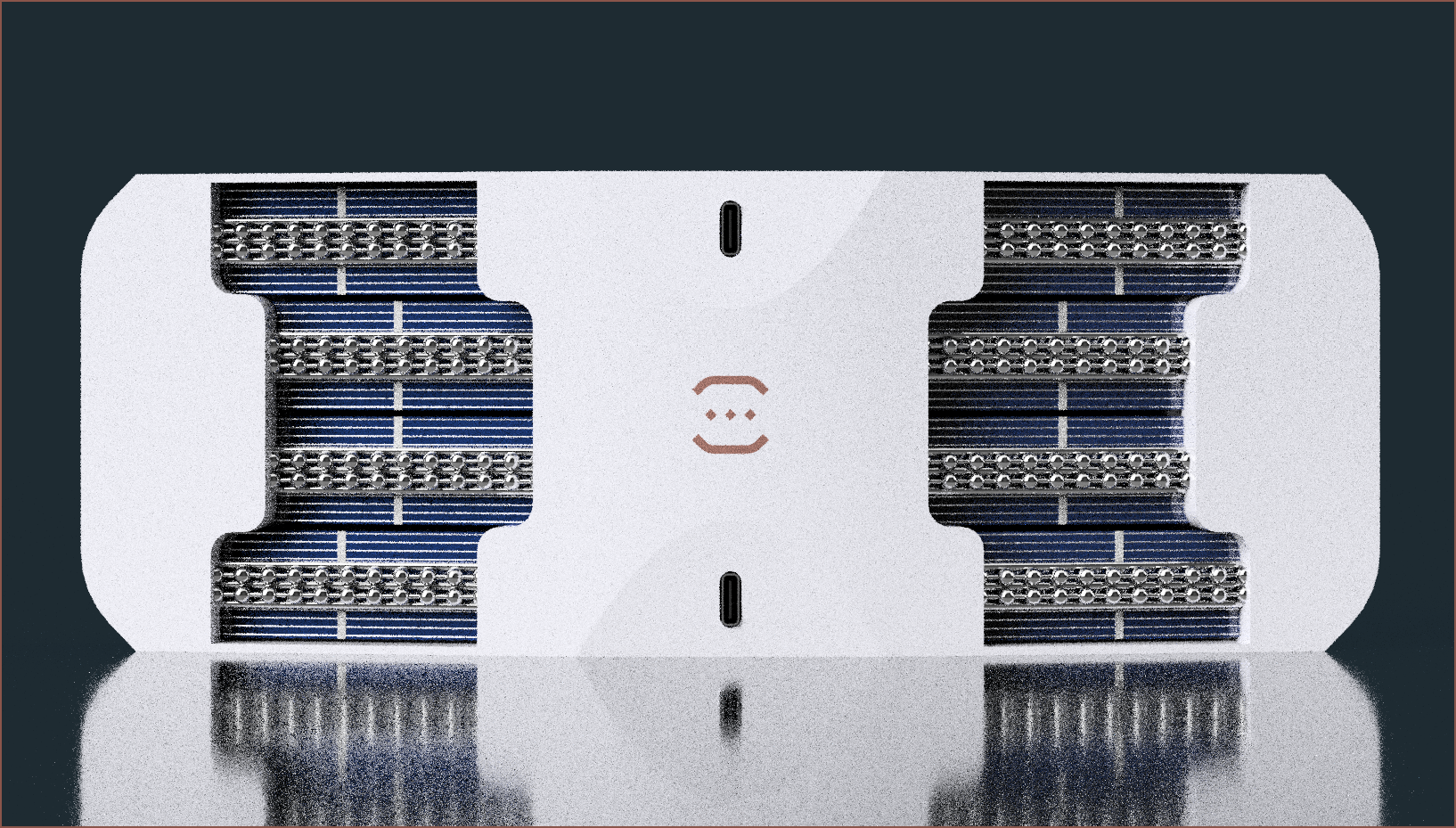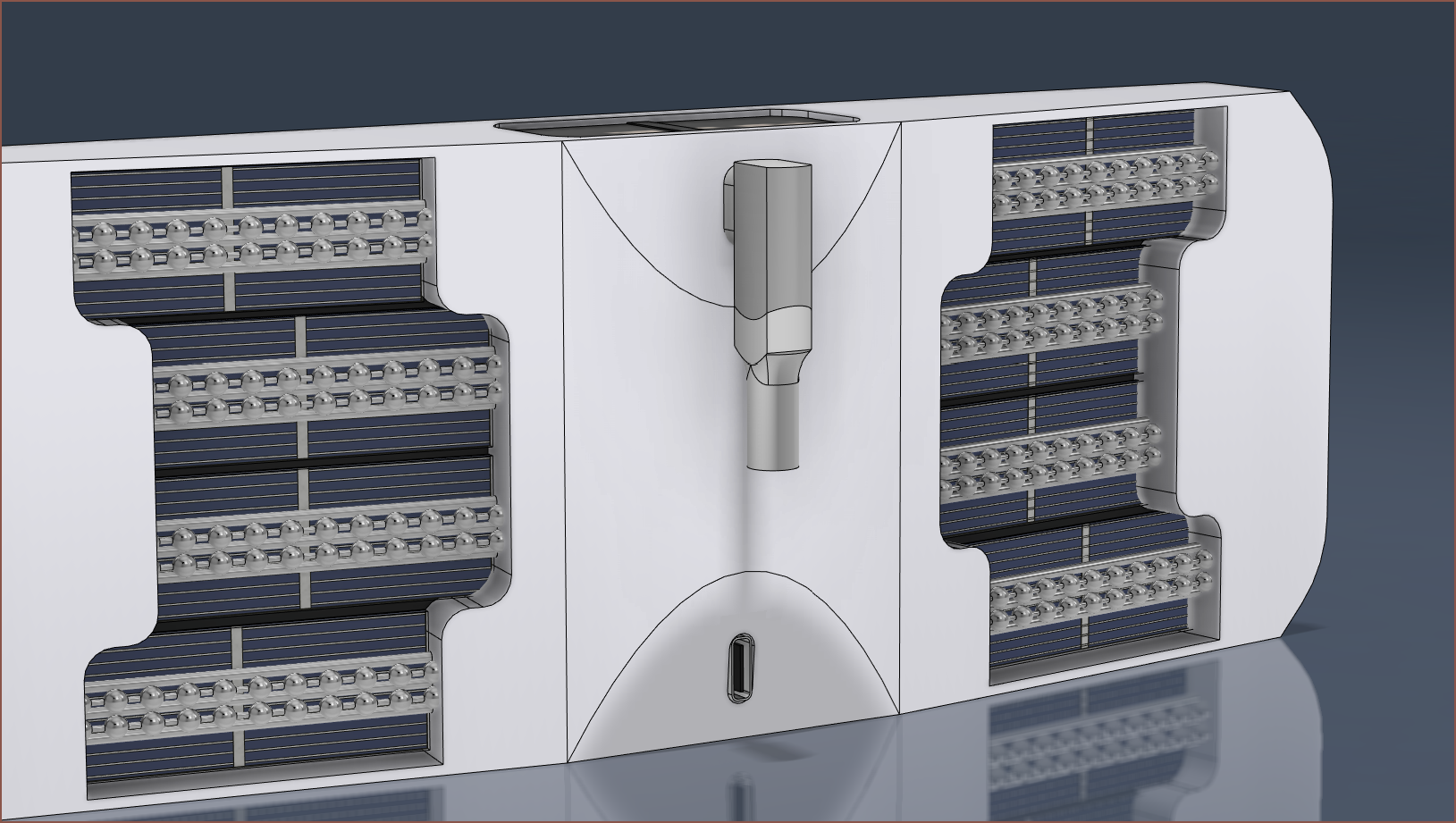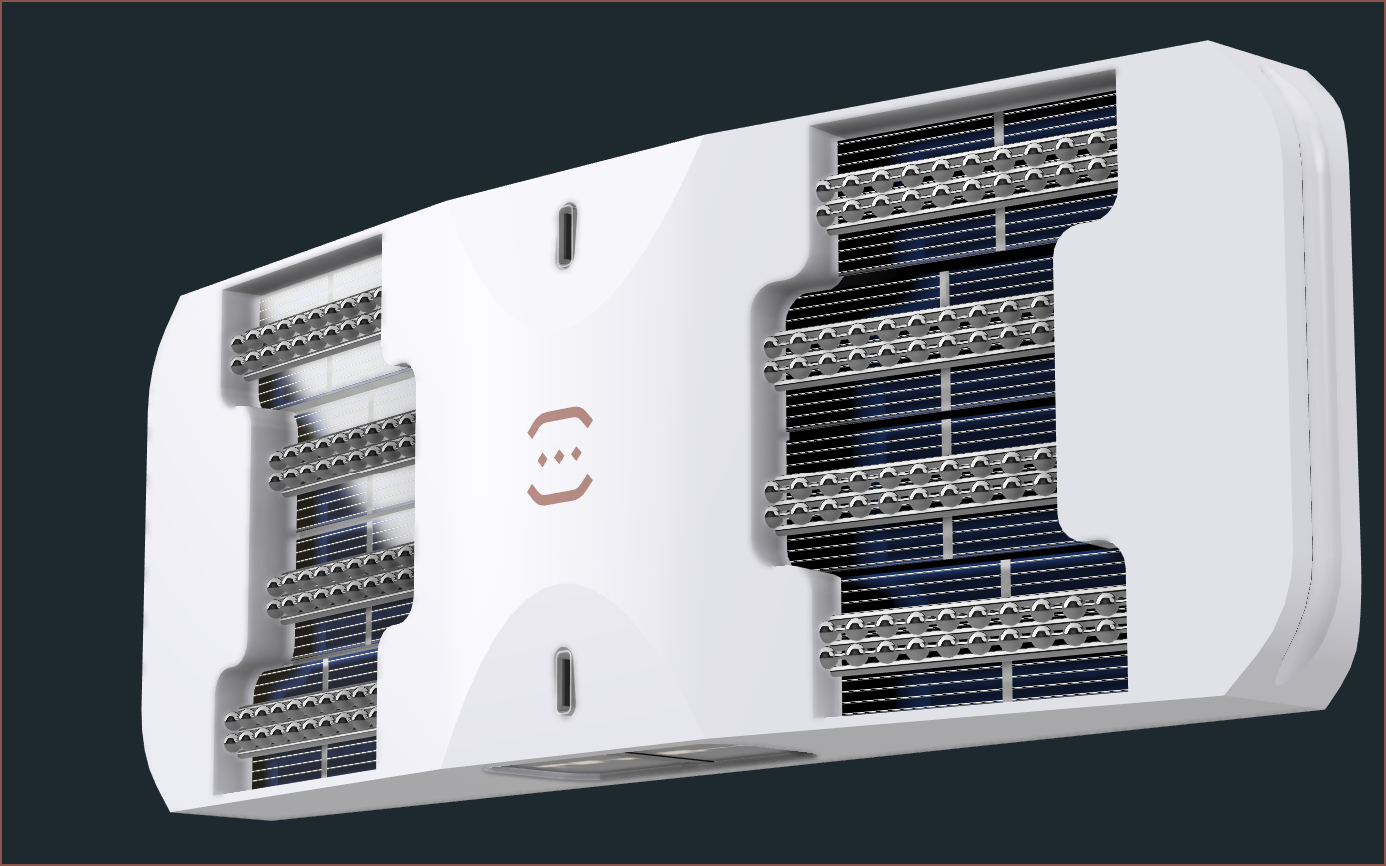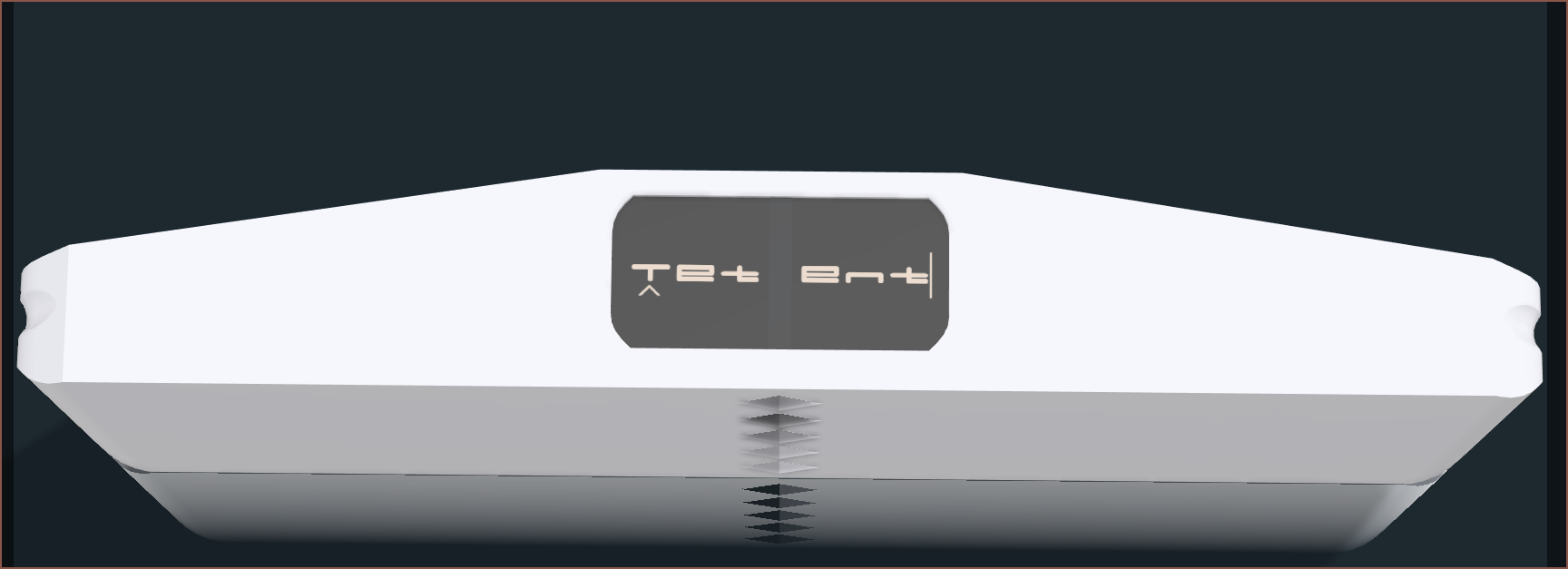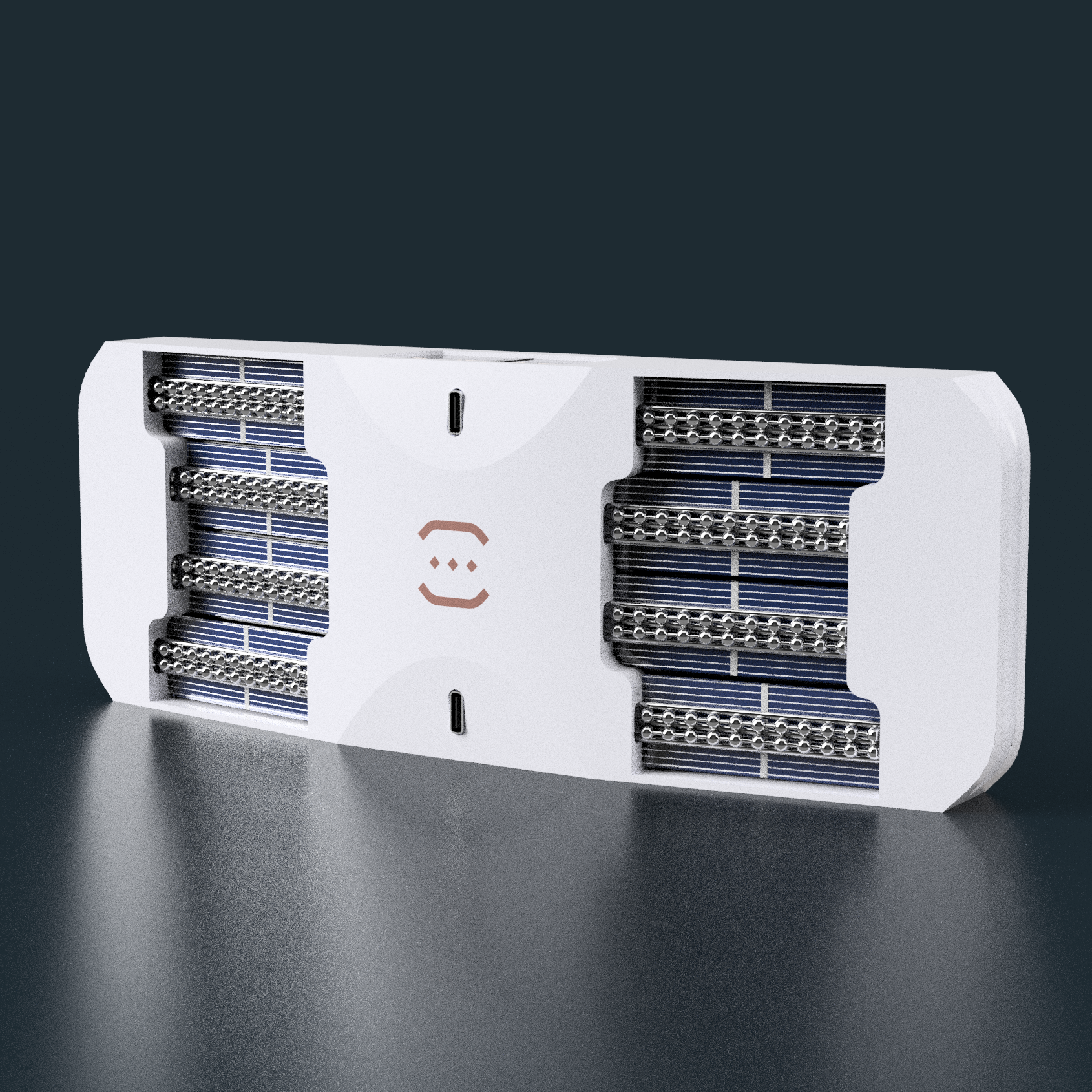-
[X] AirBerries: ZEV-XS Layout
08/09/2023 at 04:47 • 0 commentsZEV-XS
Other than swapping the location of [q/Q] and ['/"], the layout has been mostly unchanged. After 3 hours of Keybr.com and some rounds of Typing Attack, this is what my raw data looks like:
I'm not really sure how it counts the number of keys, nor why there's one single test that seemingly has nothing, but it helps understand the typing speed decreasing trend in the smoothed data:
I belive those two steps is when I was finally given the letter S, and then given the letter A a bit too soon. If you look closely, I was actually about to recover when the [a/A] nation attacked:
The main reason for the slowdown was because I was closing my eyes to enhance my tactile senses, and because I was seeing that I was often pressing a button to see what sticks. With the closed-eye strat, I only knew if I typed everything correctly after pressing space, so I actually needed to ensure I pressed the right keys. I feel like that one Spongebob episode where he can actually drive great, but only when blindfolded.
Another thing I was trying at this time was to rapid-type 2 characters at once. This was to apply the education from Ngram Type in a more wordlike setting. This includes spaces. The hope is that I can eventually chain these rapid-character moves to increase speed.
-
[M] Thumb grip failing...
07/29/2023 at 16:54 • 0 commentsSo I printed out the concept from the previous log and thought that it would be a good idea to have a grip that the thumb can latch onto so that Tetent can be used in a single hand. I then printed like 5 varying handles with the 6th one shown above (but untested). One of the ideas I had was to fit a 21700 cell and a speaker into that section, as you might be able to tell from the image above.
Unfortunately, I haven't been able to obtain an ergonomic solution so far. This image I found on the internet will help explain why:
So the gesture of holding this Tetent concept is like grabbing air and then slotting the device into the gap. The issue is that the bottom of the Tetrinsics are where that line is, meaning that I've got to orient my thumb closer to Finger5 so that it fits. After about 20 seconds, I can feel a sliiiiiight strain sensation in that red circle, and next thing I know, I've slid the entire thing up to make space for my thumb. This is an issue because the range of Finger5 becomes limited to about half of what it could do. Even then, it doesn't aleviate the discomfort.
-
[T] Split Tetent again?
07/22/2023 at 07:13 • 0 commentsSo I've been struggling with solving how I want to design the PCB for Tetent and I thought about my past decisions, remembering that one of the reasons Tetent was originally split was so that it would make better use of the available space in Teti. I'm looking at the design and it does look a lot like a larger #Tetent TimerSpy [gd0136] and while Tetrinsic is too large for attachment on the back of the hands, I might be able to get a solution that could be used in VR/AR applications. I'm also hoping that, by Tetent actually being half as long, I can use it with a smartphone or fit it in a pocket.
I've got enough space for a 146mm Tetent half in Teti, so I've designed a 288mm wide, 78mm tall concept that uses 2x 21700 cells:
Tetent looks more modern now, mainly because the face I mentioned in the previous log is now curved so that the device looks a bit like a boomerang.
-
[E1][R][X] AirBerries: Learning a custom keyboard layout
07/21/2023 at 02:35 • 0 commentsSo I've recently got a fully electrically and mechanically complete CAD model of Tetrinsic and was, once again, doing some research for Tetent, mainly because I don't like how this featureless flat face looks:
It turns out that the eteeController actually exists. I heard about them a while ago when I was researching VR input devices and I was thinking that it would be one of those crowdfunded ventures that never sees the light at the end of that tunnel.
It turns out that it uses some futuristic sounding material and algorithms to detect the pressure and touch across the 3D form, which makes Tetrinsic look like a Victorian-era solution in comparison.
Anyway, I eventually came across this video:
This reinactment of what someone like me could think when buying (or in my case, building) an ergonomic keyboard was rather relatable. But the real part that hit me was 4:16, when "You go back to your original keyboard...". For my journey, that's where it ended and I've been typing on my laptop for 2 years and this not-so-temporary "Temorary Keyboard" for 2 years instead of using the Lets Split mechanical keyboard I built 4 years ago.
Seeing to the end of the video unexpectedly gave me the potent motivation to actually take out my AirBerries. I call them that because the Gateron Clears I wanted to try were ULTRA light but WAY deeper in actuation than the laptop keyboards I've mainly typed on, meaning it was easy for me to accidentally hit another key, and because the whole thing looks like it was themed from some kind of berry burst smoothie.
So, in 1 hour sand 45 minutes, I:
- trimmed off some wire strands on the LED strip that was worringly close from causing a short,
- pulled my QMK repo fork,
- pulled the 12K commits that have been generated in the time between 2020 and now from the main repo,
- set it up with the new-to-me QMK_MSYS,
- got rid of #define RGB_SPLIT (because I guess they've changed something in these 3 years and I'm using the "extra data" pin for the RGB strip, not the microcontroller)
and I was live!
Something I found out in MonkeyType is that every specific time / word count gets treated as it's own seperate entity. Thus, this is the strategy I've done:
- 8: Swiftkey
- 0: [Any%]
- 1: Tetent (when that exists)
- 2: Z-88 Retro
- 3: AirBerries
This means that, if you look on my profile and saw any test that ends in 3 in July 2023 or later, I specifically typed it on the AirBerries . I think I was using some other but similar strat before then, because there's no way I'm getting 50wpm on my smarphone.
Anyway, as you can see, I only got 4 and a half wpm. Immediately, I was like "Well if I've got to relearn from 0 anyway, that means that this layout is probably sufficiently different enough that I can learn a completely new layout and still be able to type on QWERTY devices." I also thought it would be a good idea, so that I can prime my mind for learning something new and find out new ways of learning a new skill that I could apply to Tetent when the time came.
First order of business, taken from Tetent layout research / printed trails with #Tetent TestCut [gd0139] , I decided to move Finger5 down a row.
Then I went on Reddit to look for some insights. I already knew layouts like DVORAK and Colemak-DH, but there are other options that I learned about in this video:
A nice idea was to put the punctuation in the center. As well as reducing the workload on my painfully overworked Finger2's, I could make the keyboard look symmetrical (more on that later). The last suggestion was actually a website that generates optimized layouts, called Carpalx. I actually forgot to look into it because I wanted to quickly see what's currently around on Reddit first.
Almost immediately, I found this, which was great!
To me, the first and 3rd bullet points make a lot of sense. For a staggered QWERTY, I wouldn't've considered it, but an ortholinear layout (as with the AirBerries) could really take advantage of being able to almost slide from the top row to the home row when using the same finger. Obviously, Tetent doesn't even need to worry about any of this because the entire characterset is just duplicated to every finger.
He then linked to an analyzer website and I could enter my own text, so I put in 3 recent logs I've written. These are ideal because, unlike something like Microsoft Word, there's no autocorrect when typing Hackaday logs and I have to type everything. This is the result:
I can see why Colemak-DH has been recommended over Colemak recently.
The above were also useful insights. He also seemed to have a massive-looking swath of data to back himself up:
In the comments, he linked to an importable layout that would more-or-less be representive. Thus, I brought it in and added even more past logs.
This heatmap helped understand what was happening. Thus, I started on the layout in the QMK Configurator.
I was, coincidentally, able to get all the high-value keyboard shortcuts in the same general area.
I created the rest of the keymap and I wasn't liking the idea of O and F being on the same key, thinking of words like "of" and "for". Thus, I swapped it for W.
With that starting to take shape, I went back to the reddit post to see any more insights.
But I was like "Wait a second!! E getting a dedicated finger on Finger5's like the spacebar/backspace getting a thumb?! The ones that aren't doing much anything else and can free up other fingers?"
I knew the letter T was going to be right behind, so I put that on the right Finger5. This strat also meant that I could do CRTL+A with reduced finger movement.
For my other layers, I wanted to be able to actually type symbols like ±, and it turns out you need an ALT code for that. Did some reasearch and it turns out a QMK fork called Vial is the easiest solution. It seems that keymap.c stores the default keymap and then Vial uses EEPROM to store and load a custom layout on the fly so that one doesn't have to recompile on every keymap change.
I created a fork and started work. It was some tough stuff, but the toughest part was actually the keymap in the vial.json file. You see, it's the thing that allows Vial's desktop software to properly set the layout. First, I thought it was optional, then I thought that I just had to have blank keys, then I thought the layout was this:
I had to comment the {x:1} part for it to work:
In the config, I increased the default max limit of layers because I thought "I've only got half the keys of a normal 104 layout, so I should be able to get some more". Then it came to flashing:
Well going back didn't do anything. Reading the docs, the amount of layers is only really going to affect RAM / EEPROM useage. Convinently, there's a section that goes over reducing the firmware size.
ANGUISH!!!
I have no idea what these settings do, I can't find any documentation that says what these do and I never hit any issue turning it off, and I got a 25,XXX byte file.
The good news is that I could get the 6 layers I hoped for. The bad news is that the map was all over the place!
I did some tweaking and it all looked like it aligned:
However, when I tried the matrix tester, it was all wrong. After a while of experimentation and digging, I found this file:
This implied that the matrix was actually a 6 x 8 not a 4x12 as I originally thought.
Before, those 2 keys were showing up starting from (1, 2) instead of (0,0) seen here.
Finally, I could actually start getting those alt codes:
I also tried out those OSM modifiers and they're cool. They work kind of like a touchscreen keyboard.
Well it was actually time to try it:
It seemed either like the backspace key wasn't registering correctly (I've got 3 o-rings on most of the keys to reduce the bottom-out distance), registering multiple times or QMK doesn't like OSM LCTRL + Backspace. Turned off the modifiers and I got much further.
I thought it would now be a good time to use #Interval Provisional [gd0097] to set up a practice timer:
I was supposed to set a 6minute, 3 second time on Monkeytype but I accidentally set a 603 timer instead, which is 10 minutes. Regardless, since I want to keep that perfect no-DNFs streak, I went through anyway:
It was nice because the keys were actually in a position that I could reason with and my fingers were actually right were they needed to be. Right now, I'm in "training wheels" mode and so I'm looking at the keyboard / reference of it. I did feel that it was a bit of an annoying stretch to go for the G key though.
The next test was Ngram which is a site that teaches common bigrams.
I got to this when I found out that I was getting double presses on my N key. I increased my debounce time from 6 to 12ms, as I hear that the new Apple Vision Pro has a 12ms latency and the industry is saying that the target is under 20ms. Increasing the debounce time really helped out.
Next, I tweaked the layout in the Analyzer to see how it compared.
I'm suprised how far down my version has fallen from the template. The good news though is that my layout is an equilizer:
I was also able to get an additional 1% by swapping the positions of Q and G. But then, I found out how to set up my own custom layout that is more representative:
AltGr is the layer for my numbers, where the left side is the normal numbers and the right are the numberpad numbers. I didn't bother adding things like the arrows. Well, how did it perform?
Still though, in 29.3 thousand characters of my past logs, I didn't see the SHE layout layout drop before 72%.
In other news, I had to wrip up my number and function layers because it seems that they didn't activate in my Fusion 360 layer. It turns out that they have to be in the topmost layers so that they work on lower ones.
AirBerries: Base layer. Can you see that it looks like a yoghurt or smoothie drink? Also, those 4 transluscent keys are the punctuation symbols and were the reason why my layout didn't look symmetrical before. Fusion 360 Layer (currently unpopulated) Number layer, locked though first pressing the Fn key. In real life, this looks like #00BCD4. This is where I got to until writing this log (on my Z-88 Retro, by the way) and now my fingers hurt aftr these 4 hours of typing. Well, 2 actually: my left and right Finger2s. I was thinking that learning a new layout, especially when Tetent could exist Soom(TM) would be a waste of time, but I'm starting to change my mind.
I was also thinking that swapping Q and K would improve my score, but it actually got slightly worse.
The layout:
The layout for Keyboard Layout Analyser:
{ "label": "IRN", "fingerStart": { "1": 37, "2": 26, "3": 27, "4": 28, "5": 53, "6": 54, "7": 31, "8": 32, "9": 33, "10": 46, "11": -1, "false": -1 }, "keyboardType": "matrix", "author": "Glodigit", "authorUrl": "https://github.com/Glodigit", "moreInfoUrl": "https://hackaday.io/project/184181-tetent-gd0090/log/221386-rx-airberries-a-lets-split-keyboard", "moreInfoText": "AirBerries", "keys": [ { "primary": -1, "shift": -1, "finger": 1, "id": 0, "altGr": -1, "shiftAltGr": -1 }, { "primary": -1, "shift": -1, "finger": 1, "id": 1, "altGr": -1, "shiftAltGr": -1 }, { "primary": -1, "shift": -1, "finger": 2, "id": 2, "altGr": -1, "shiftAltGr": -1 }, { "primary": -1, "shift": -1, "finger": 3, "id": 3, "altGr": -1, "shiftAltGr": -1 }, { "primary": -1, "shift": -1, "finger": 4, "id": 4, "altGr": -1, "shiftAltGr": -1 }, { "primary": -1, "shift": -1, "finger": 4, "id": 5, "altGr": -1, "shiftAltGr": -1 }, { "primary": -1, "shift": -1, "finger": 7, "id": 6, "altGr": -1, "shiftAltGr": -1 }, { "primary": -1, "shift": -1, "finger": 7, "id": 7, "altGr": -1, "shiftAltGr": -1 }, { "primary": -1, "shift": -1, "finger": 8, "id": 8, "altGr": -1, "shiftAltGr": -1 }, { "primary": -1, "shift": -1, "finger": 9, "id": 9, "altGr": -1, "shiftAltGr": -1 }, { "primary": -1, "shift": -1, "finger": 10, "id": 10, "altGr": -1, "shiftAltGr": -1 }, { "primary": -1, "shift": -1, "finger": 10, "id": 11, "altGr": -1, "shiftAltGr": -1 }, { "primary": -1, "shift": -1, "finger": 1, "id": 12, "altGr": -1, "shiftAltGr": -1 }, { "primary": 9, "shift": -1, "finger": 1, "id": 13, "altGr": -1, "shiftAltGr": -1 }, { "primary": 99, "shift": 67, "finger": 2, "id": 14, "altGr": 55, "shiftAltGr": 38 }, { "primary": 111, "shift": 79, "finger": 3, "id": 15, "altGr": 56, "shiftAltGr": 42 }, { "primary": 108, "shift": 76, "finger": 4, "id": 16, "altGr": 57, "shiftAltGr": 40 }, { "primary": 107, "shift": 75, "finger": 4, "id": 17, "altGr": 43, "shiftAltGr": -1 }, { "primary": 113, "shift": 81, "finger": 7, "id": 18, "altGr": 47, "shiftAltGr": 63 }, { "primary": 117, "shift": 85, "finger": 7, "id": 19, "altGr": 55, "shiftAltGr": -1 }, { "primary": 100, "shift": 68, "finger": 8, "id": 20, "altGr": 56, "shiftAltGr": -1 }, { "primary": 112, "shift": 80, "finger": 9, "id": 21, "altGr": 57, "shiftAltGr": -1 }, { "primary": -1, "shift": -1, "finger": 10, "id": 22, "altGr": -1, "shiftAltGr": -1 }, { "primary": -1, "shift": -1, "finger": 10, "id": 23, "altGr": -1, "shiftAltGr": -1 }, { "primary": -1, "shift": -1, "finger": 1, "id": 24, "altGr": -1, "shiftAltGr": -1 }, { "primary": 120, "shift": 88, "finger": 1, "id": 25, "altGr": -1, "shiftAltGr": -1 }, { "primary": 115, "shift": 83, "finger": 2, "id": 26, "altGr": 52, "shiftAltGr": 36 }, { "primary": 97, "shift": 65, "finger": 3, "id": 27, "altGr": 53, "shiftAltGr": 37 }, { "primary": 104, "shift": 72, "finger": 4, "id": 28, "altGr": 54, "shiftAltGr": 94 }, { "primary": 44, "shift": 60, "finger": 4, "id": 29, "altGr": -1, "shiftAltGr": -1 }, { "primary": 46, "shift": 62, "finger": 7, "id": 30, "altGr": -1, "shiftAltGr": -1 }, { "primary": 105, "shift": 73, "finger": 7, "id": 31, "altGr": 52, "shiftAltGr": -1 }, { "primary": 114, "shift": 82, "finger": 8, "id": 32, "altGr": 53, "shiftAltGr": -1 }, { "primary": 110, "shift": 78, "finger": 9, "id": 33, "altGr": 54, "shiftAltGr": -1 }, { "primary": 106, "shift": 74, "finger": 10, "id": 34, "altGr": 59, "shiftAltGr": -1 }, { "primary": -1, "shift": -1, "finger": 10, "id": 35, "altGr": -1, "shiftAltGr": -1 }, { "primary": 16, "finger": 1, "id": 36, "shift": -1, "altGr": -1, "shiftAltGr": -1 }, { "primary": 101, "finger": 1, "id": 37, "shift": 69, "altGr": 48, "shiftAltGr": 41 }, { "primary": 118, "finger": 2, "id": 38, "shift": 86, "altGr": 49, "shiftAltGr": 33 }, { "primary": 119, "finger": 3, "id": 39, "shift": 87, "altGr": 50, "shiftAltGr": 34 }, { "primary": 102, "finger": 4, "id": 40, "shift": 70, "altGr": 51, "shiftAltGr": 163 }, { "primary": 63, "finger": 4, "id": 41, "shift": -1, "altGr": 45, "shiftAltGr": 95 }, { "primary": 33, "finger": 7, "id": 42, "shift": -1, "altGr": 42, "shiftAltGr": -1 }, { "primary": 121, "finger": 7, "id": 43, "shift": 89, "altGr": 49, "shiftAltGr": -1 }, { "primary": 109, "shift": 77, "finger": 8, "id": 44, "altGr": 50, "shiftAltGr": -1 }, { "primary": 98, "finger": 9, "id": 45, "shift": 66, "altGr": 51, "shiftAltGr": -1 }, { "primary": 116, "finger": 10, "id": 46, "shift": 84, "altGr": 48, "shiftAltGr": -1 }, { "primary": 39, "finger": 10, "id": 47, "shift": 34, "altGr": 58, "shiftAltGr": -1 }, { "primary": 17, "finger": 1, "id": 48, "shift": -1, "altGr": -1, "shiftAltGr": -1 }, { "primary": 122, "finger": 1, "id": 49, "shift": 90, "altGr": -1, "shiftAltGr": -1 }, { "primary": -91, "finger": 5, "id": 50, "shift": -1, "altGr": -1, "shiftAltGr": -1 }, { "primary": 18, "finger": 5, "id": 51, "shift": -1, "altGr": -1, "shiftAltGr": -1 }, { "primary": -1, "finger": 5, "id": 52, "shift": -1, "altGr": -1, "shiftAltGr": -1 }, { "primary": 32, "finger": 5, "id": 53, "shift": -1, "altGr": -1, "shiftAltGr": -1 }, { "primary": 8, "finger": 6, "id": 54, "shift": -1, "altGr": -1, "shiftAltGr": -1 }, { "primary": -18, "finger": 6, "id": 55, "shift": -1, "altGr": -1, "shiftAltGr": -1 }, { "primary": -1, "finger": 6, "id": 56, "shift": -1, "altGr": -1, "shiftAltGr": -1 }, { "primary": -1, "finger": 6, "id": 57, "shift": -1, "altGr": -1, "shiftAltGr": -1 }, { "primary": 103, "finger": 10, "id": 58, "shift": 71, "altGr": -1, "shiftAltGr": -1 }, { "primary": 13, "finger": 10, "id": 59, "shift": -1, "altGr": -1, "shiftAltGr": -1 } ] }My forked repository: https://github.com/Glodigit/vial-qmk
[23 July: Edit 1]I've moved a few keys around, namely swapping the H and R columns, adding a right shift key and moving the CTRL so that I can reach it with my thumb. My score on the analyzer is now 68.88 for the ZEV-XS layout:
I've also populated my Fusion 360 layer, which is only on the left side because I intend to use it one handed. To allow this, I've had to move some keys on the number layer so that I could access everything I think I'd need:
In terms of learning, my plan so far is
- Ngram Type (72wpm threshold)
- keybr.com
- monkeytype (363 seconds, and my last test a few hours ago, I got 8wpm)
The main strat I'm trying out on Ngram is to not actualy look at the output text on the screen and instead focusing on the sensory input of my fingers. This is allowing me to simulate typing bigrams / trigrams without physically using the keyboard, and motivates me to strike the keys with a sufficient amount of confidence.
I've also programmed in LEDs for the various Lock LEDs, and I'm very glad on how the CAPS LOCK version came out. Now, it's so much more obvious that I'm in that mode.
-
[E1][M] New design with 18.75mm spacing
07/13/2023 at 22:33 • 0 commentsI've implemented the main changes so that I can get a 3D print to confirm, but I haven't yet thought about battery or speaker placement. So that I can still fit in the 230mm target, I've aligned all Tetrinsics. The reason why I've gone with 18.75mm spacing is because the previous attempt was 19.7mm spacing and I wanted to see if I could overshoot the spacing required, and I thought that a 0.75mm gap was achievable.
[16 July: Edit 1] I've printed out the concept and it's more or less got acceptable spacing. I'm going to try for 0.6mm spacing between Tetrinsics (so an overal pitch of 18.6mm), partially because there's a lot of measurements that are intiger divisible by 0.6 (e.g. 1.2mm aluminium skeleton frame, 18mm width, 63mm active length).
-
[P] Concept-half print
07/13/2023 at 18:54 • 0 commentsSo I remembered something, which was that I tried to print out a concept months ago but my small FDM printer was mysteriously broken.
While I can't test the slope angle, I was already expecting that the spacing would be too large from the 1:1 scaled image a few logs ago, and that's why I was looking into the dual-screen solution in the previous log.
Now I've undusted my Linear Plus and, after some first layer surgery, I was able to get this half of the printable concept model printed.
As expected, I'm going to have to drop the beautiful-and-bright 1.47" LCDs. Even in this model, the spacing between them was a minute 0.3mm, when ideally I'd have 1mm of spacing to account for manufacturing tolerances. This is why the 18mm Tetrinsic design is more ideal, because then I can get the keyboard industry standard of 19.00 / 19.05mm.
Secondly, the angle is about half of what it needs to be. This actually should be expected, since the Tetrinsic design I had before going to 3.2mm had a natural angle twice of the current one. The 2.4mm Tetrinsic had a 18 degree angle and this new one is 9.36 degrees.
-
[M] Dual Screens? Dual Speakers.
07/10/2023 at 02:17 • 0 commentsSo I was wondering if I should actually enforce a maximum Tetrinsic width of 18mm so that the minimum spacing could be 19.2mm. The 1.14" LCD can be doubled up to obtain a 62mm active length Tetrinsic, though the screen itself has a lower color gamut and brightness than the 1.47" (65K 400nits vs 262K 600nits). The above Tetent is 248mm long.
I tried to hold a 29cm long box similar to how Tetent will be held and I felt that it was probably best if I kept #Leti, the Tetent UMPC, at around 30cm. Considering that the current motherboard options take up 80 - 90mm, there's only a few mm available with the current 93mm length, 52mm active length Tetrinsics. Thus, I've reverted back to the 1.47" Tetrinsic.
To stay in the 230mm of availabe space in #Teti [gd0022] without having to make the entire enclosure longer, the 80mm samsung speaker wasn't going to fit. Instead, I'll be implementing a stereo soundsystem with these:
-
[T] 2.4mm vs 3.2mm ball chain
07/08/2023 at 07:14 • 0 commentsI've recently tweaked Tetrinsic for 2.4mm ball chain because the 3.2 chain has bend radius issues and the solution that might work is going to be a rather small sprocket:
Straight after writing the log, I bought a 2.4mm x 10m chain to properly compare, though I am wondering if I should buy a 3.2mm chain from a second source to see if this "used" chain is even representative of 3.2mm stainless chains in general.
Anyway, I've made some before (3.2mm) and after (2.4mm) renders:
The 2.4mm chain looks closer to chainmail. Tetent looks looks fancy with 2.4, but the 3.2mm chain I have makes Tetent look way more premium because it's darker, more pronounced and less cluttered looking. It also feels more comfortable, likely because pressure from my fingertips are spread out over a wider area.
The only benefit I can find for the 2.4mm so far is that it can turn on a 7mm diameter bend and that Tetent is 3mm thinner. It does kind of seem like 7mm is near the limit without a way to keep the balls close together during the bend (what the sprocket is for), so perhaps a different 3.2mm chain would still need the sprocket solution.
However, feeling better on the fingers has a higher priority than aesthetics or thickness (as long as the Tetrinsics themselves don't exceed 19.5mm in width).
-
[M] LCD Aesthetics
07/06/2023 at 02:57 • 0 commentsSo, after trying a multitude of options, I think the below design is the most generally visually apealling:
With the Tetrinsics set to a green texture, Tetent looks like it's themed by some kind of jungle temple. As I'll explain below, I thing grey is the most versatile colour to fill in the extra space.
I first considered if there was a better-fit LCD. There wasn't, so the plan was to place the LCD so that it was still visually appealing. There's essentially 3 alignment options: Nearest to pulley, centered and nearest to sprocket. Considering centered would need 2 extension pieces precisely glued, and the LCD has a chin with a cable I also need to consider, I decided to align nearest to either the sprocket or the pulley.
Since the "home position" of the fingers (which are not see-though) are closest to the pulley, the flat ribbon cable between the PCB and LCD aligns when the LCD's chin is closest to the sprocket and the LCDs look more homegeneous when the only thing that seperates them is the center white section of Tetent, I've decided to align the LCDs closest to the sprocket of Tetrinsic.
The first idea was to have a piece that had a dark blue colour to have a similar look to Tetrinsic Taic, which for Tetent I'm just going to shorten to "Tetentaic". I quickly decided to have a bezel that matched the LCD:
When in Tetent, the dark colours just made the illuminated area seem lobsided:
Perhaps lobsided is the wrong word. More like the dark part is made of some kind of spacematter or void (such as in Minecraft). Essentially, I was growing more focused on the part that isn't the screen.
The next idea, intuitively, was to go to the other side and use white. While it gives Tetent a White + Black theme that's popular in the self-built PC hobby, I think it has an even more distracting look than the dark blue.
This idea certainly didn't help. It'll probably be ok if one sticks to similar colours on the LCD too, but I wanted to have a design that could work with any colour scheme.
I then tried black with a grey bezel. I think this has a good balance of brightness and darkness. This is the one I tried just before trying an all-grey approach seen at the top of this log.
I think this version is visually crispier than the all-grey version due the the higher contrast from the black plastic. However, I belive the all-grey extension blends with the LCD better and promotes a calmer looking mindset.
-
[M] Tetrinsic Taic
06/30/2023 at 14:41 • 0 commentsI have designed yet a new Tetrinsic concept and have gone through and updated the concept Tetent model.
I completely forgot how small this thing actually is, such that I was suprised on how large the USB Type-C connector was:
In the past, I looked at products and cars to see if I could get any design ideas, and one of them was to have a shallow but sharp bend in the surface so that the light hits slightly differently:
The main reason for the cut though was so that it looks like this from the 1st person perspective:
To conclude, while I'm still not sure if the 8 solar panels would actually noticably improve battery life (it should be approx 200mA if it charged at 5V) but it sure sells the modern-day renewable engergy aesthetic.
[1 July] I've tweaked Tetrinsic so that the full 52mm of active area is available. I've also made my logo 18mm large and added some cutouts for the chain so it looked more realistic.The max power generation of 8 of those solar cells is 1.36W. Assuming 80% efficiency due to shadows (ball-chain, fingers, etc) and voltage conversion circuitry, Tetent might be able to absorb 1.088W when in sunlight.
Tetent [gd0090]
A water resistant, 300WPM input peripheral for end-to-end workflows.
 kelvinA
kelvinA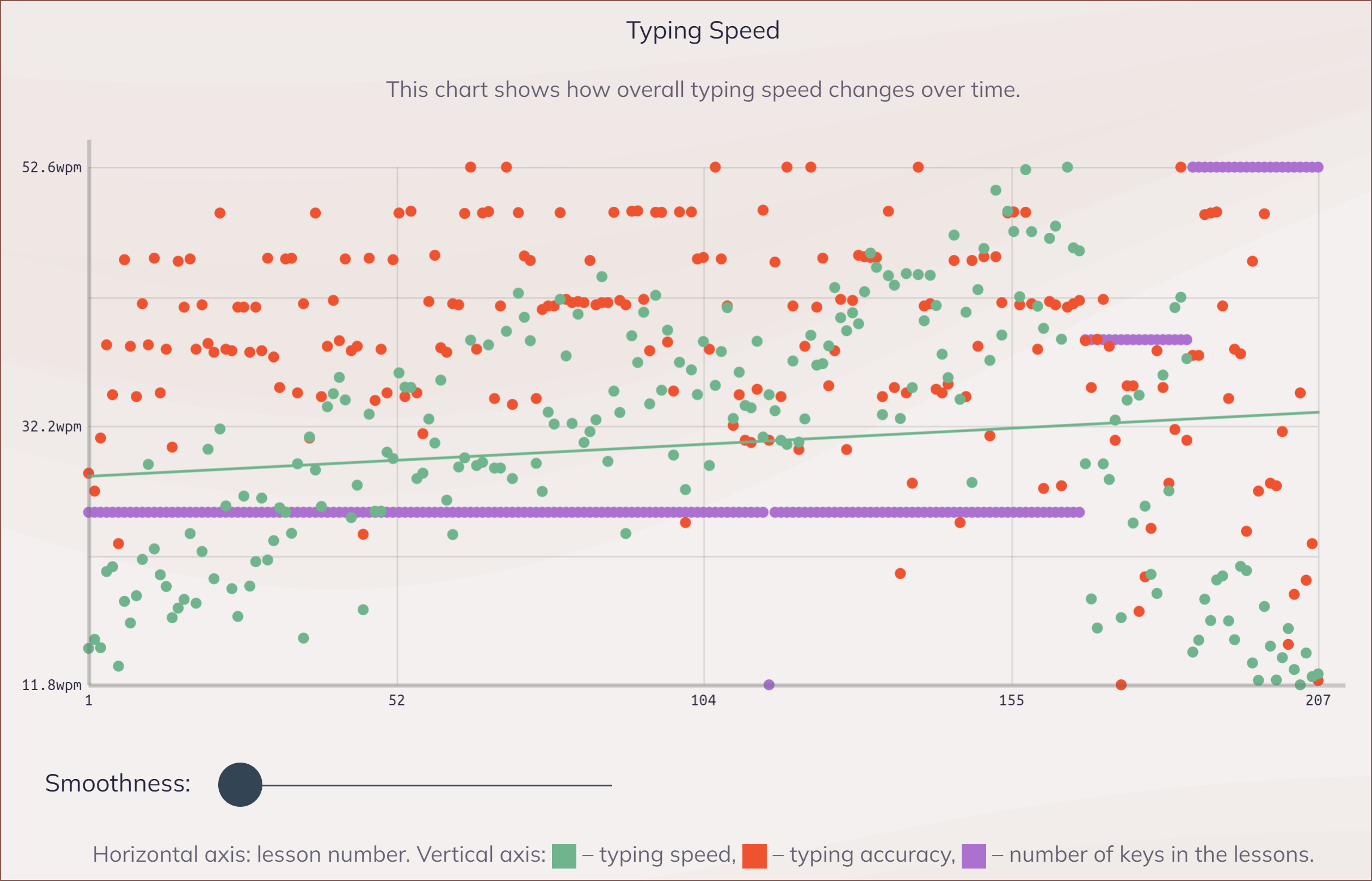
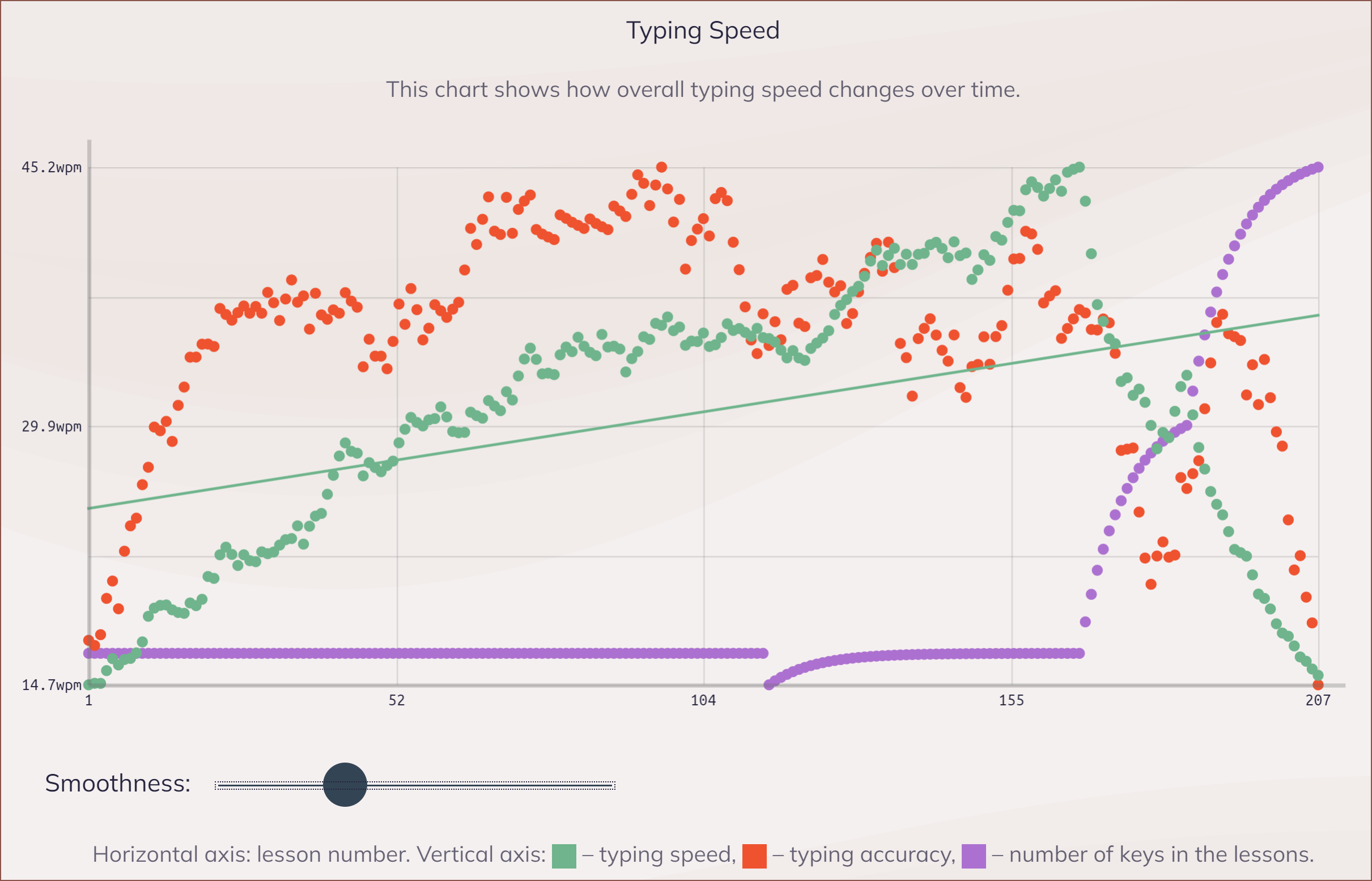
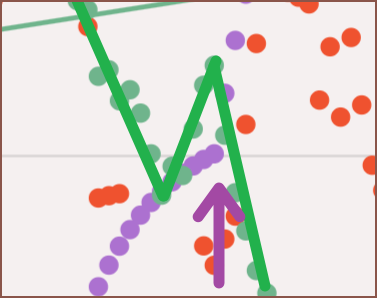
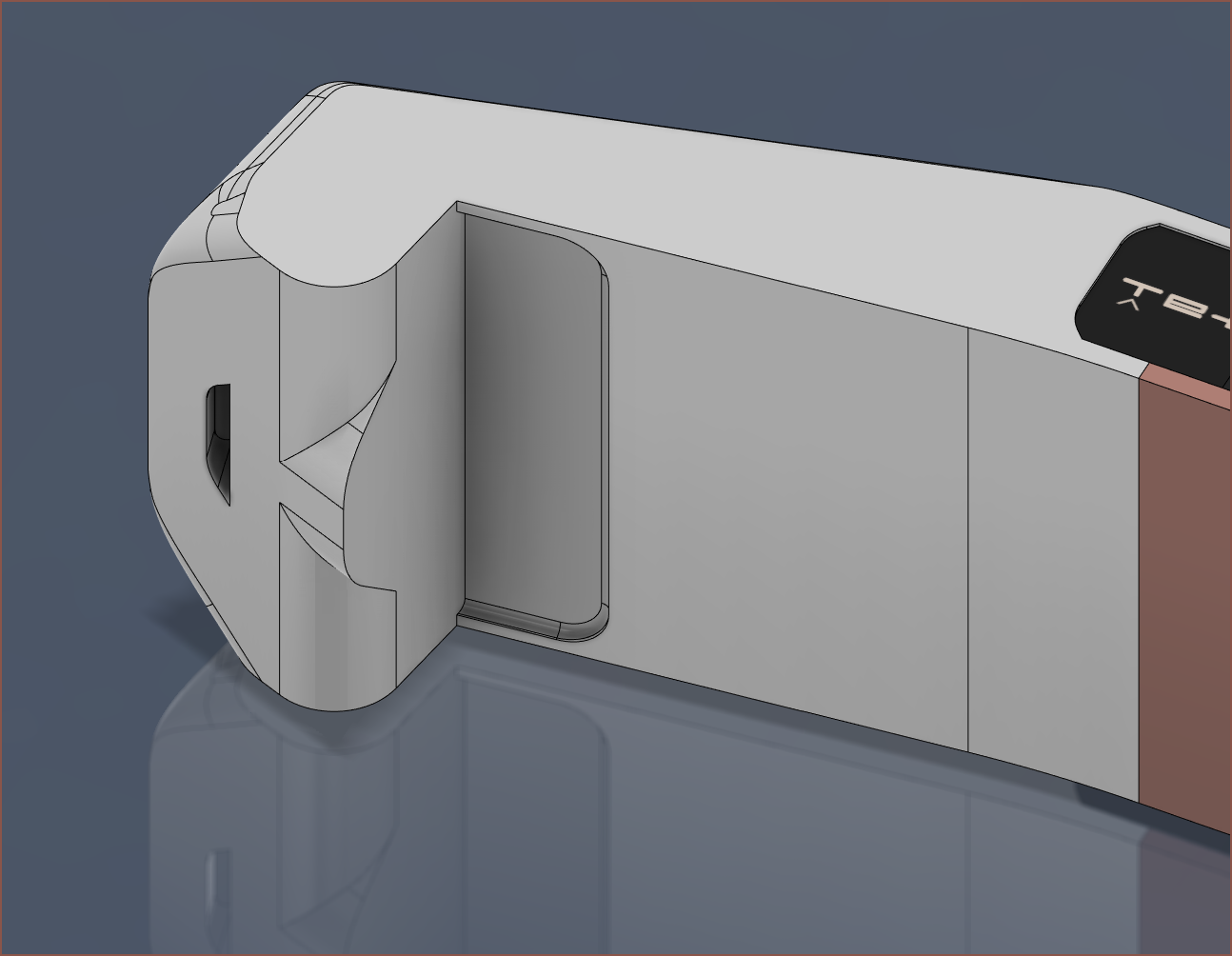
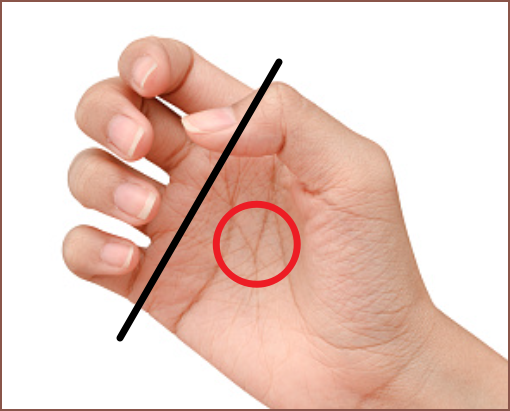

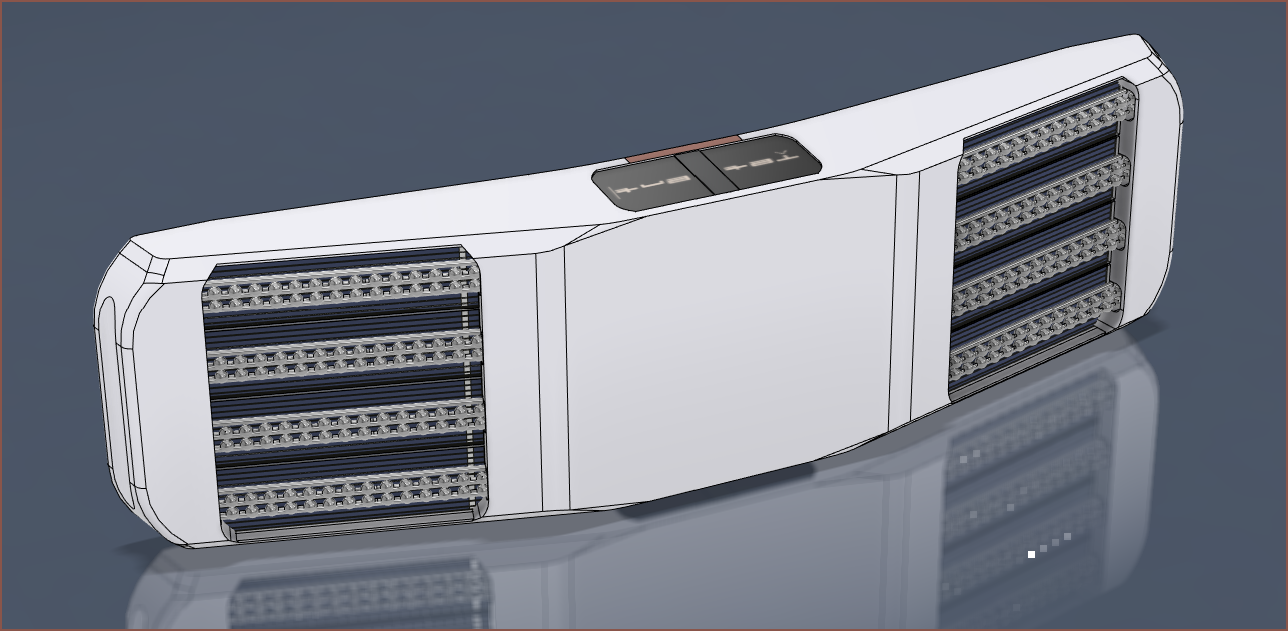
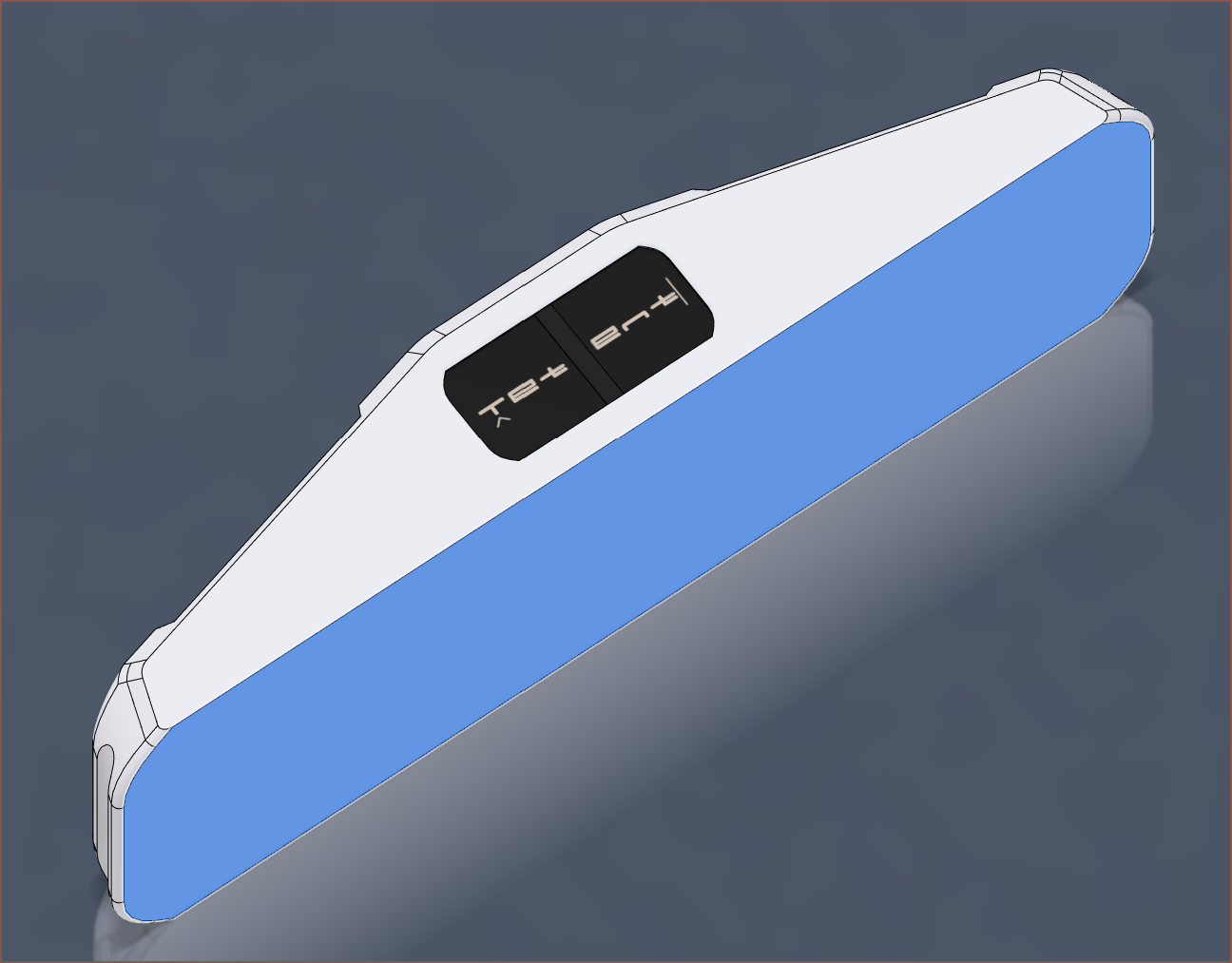
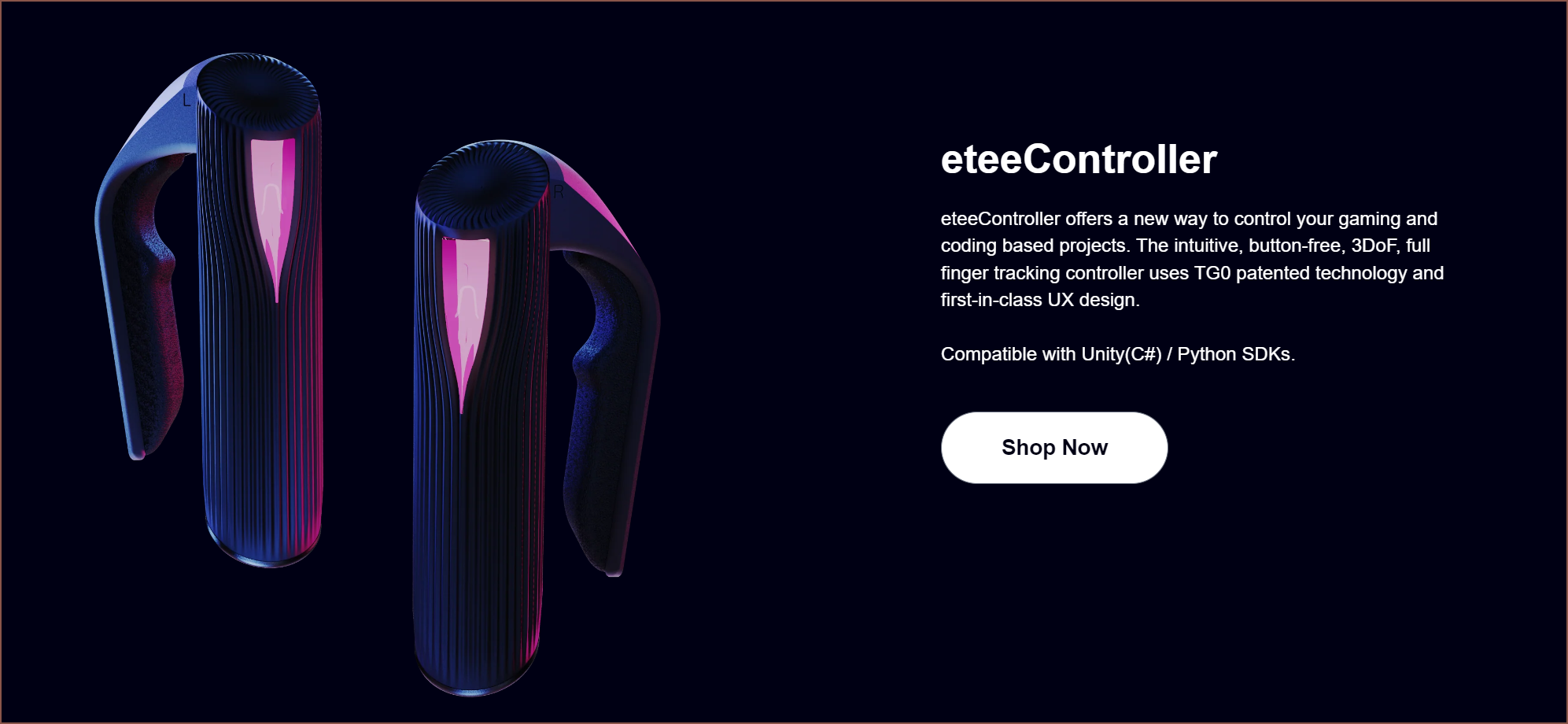
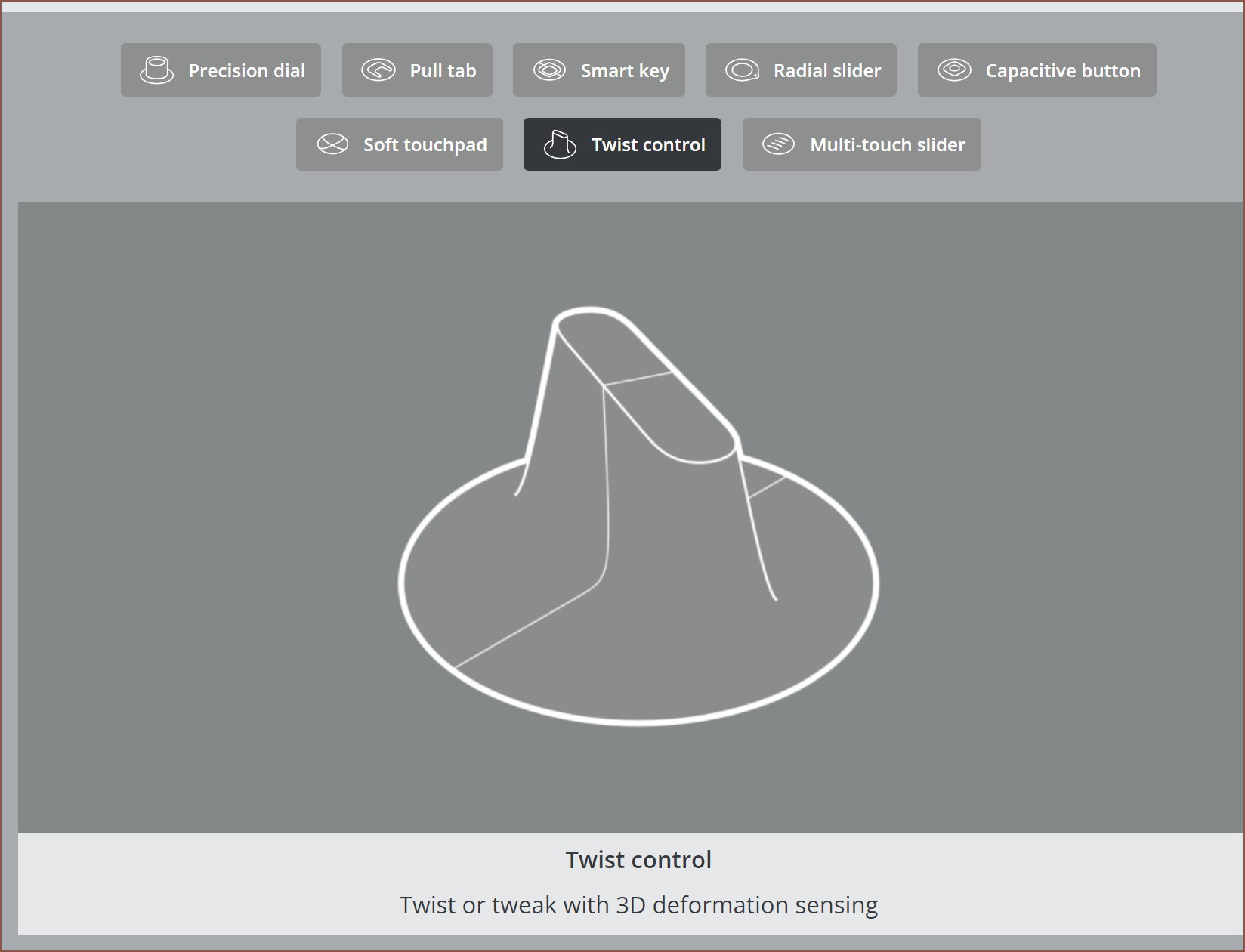
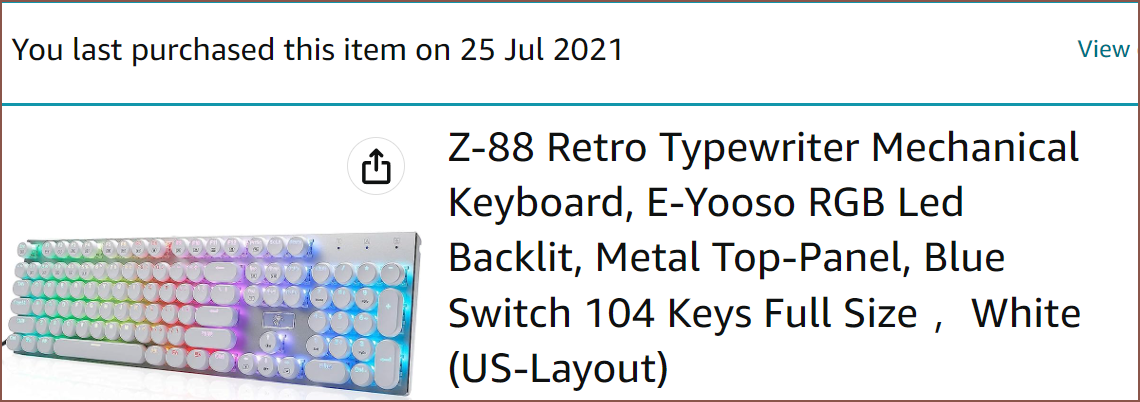
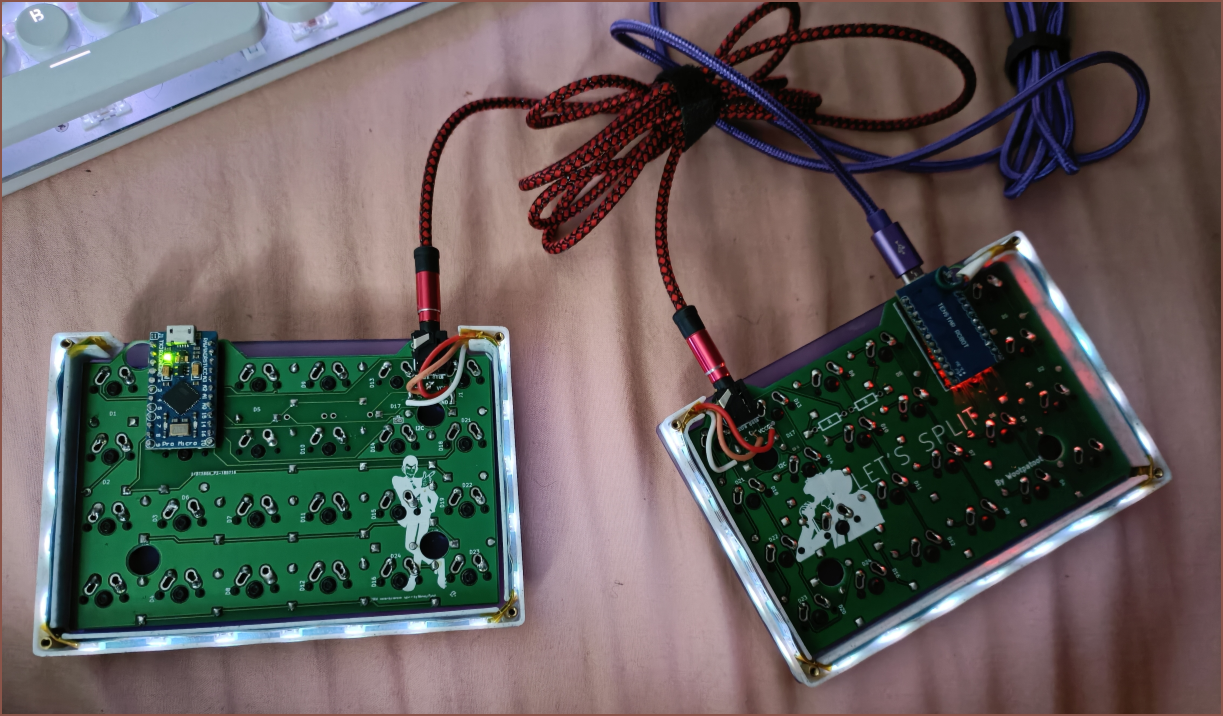

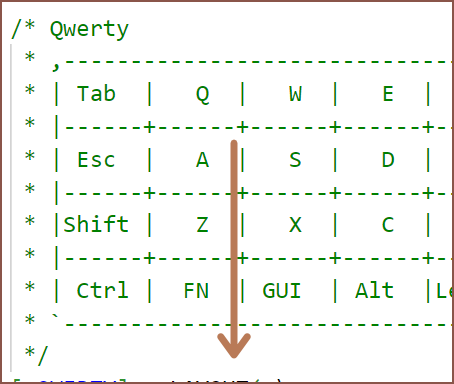
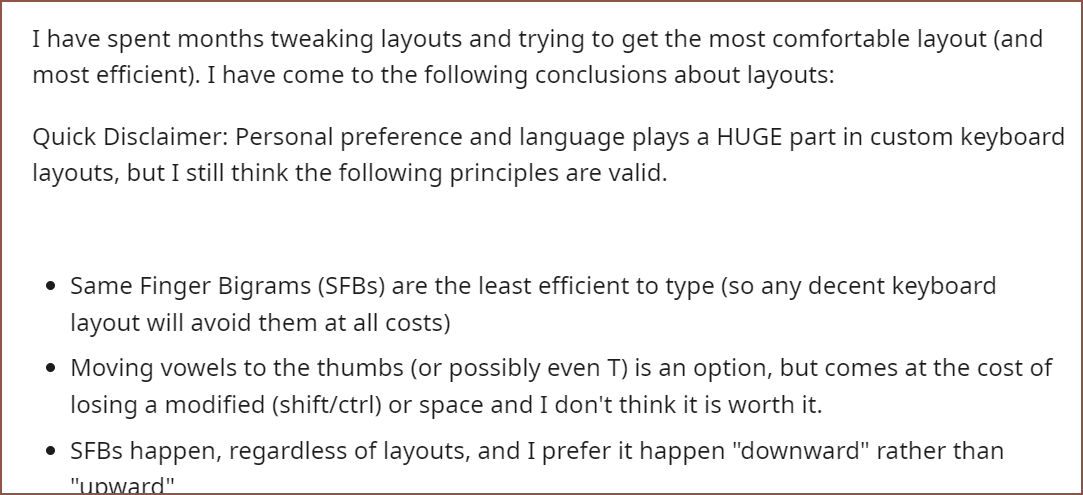



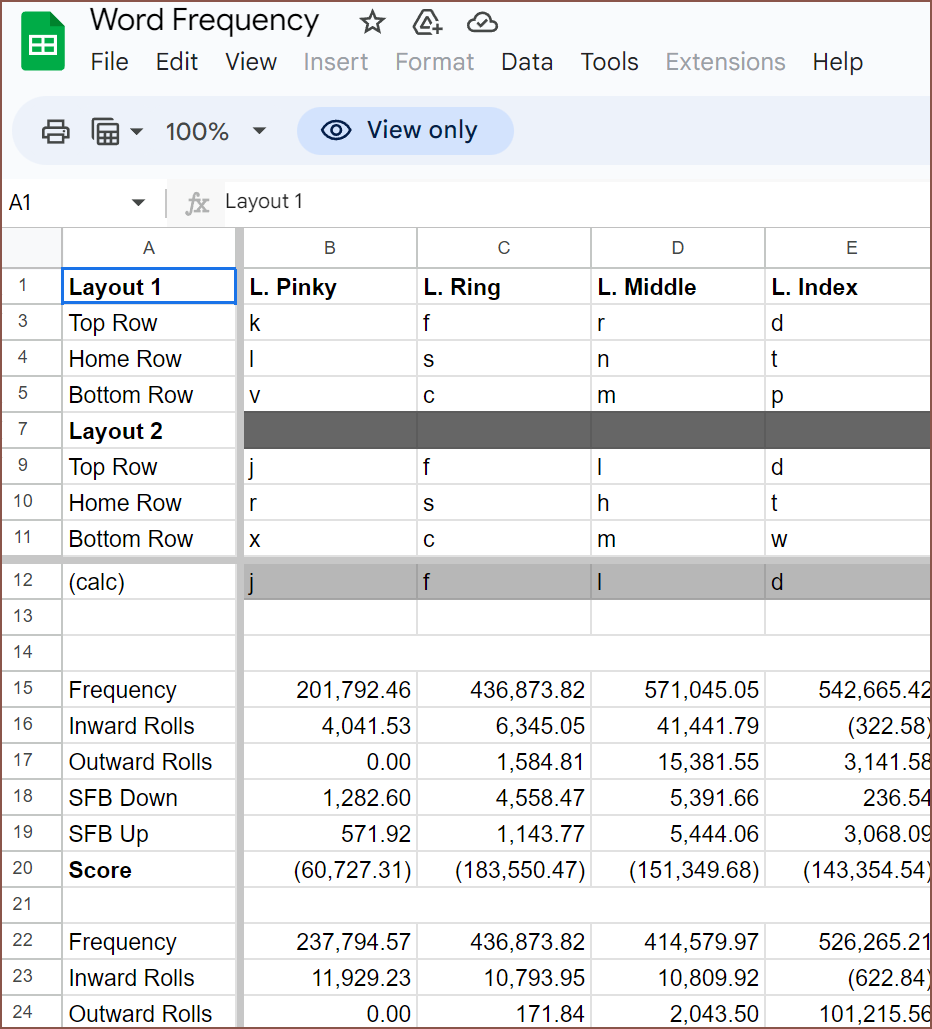

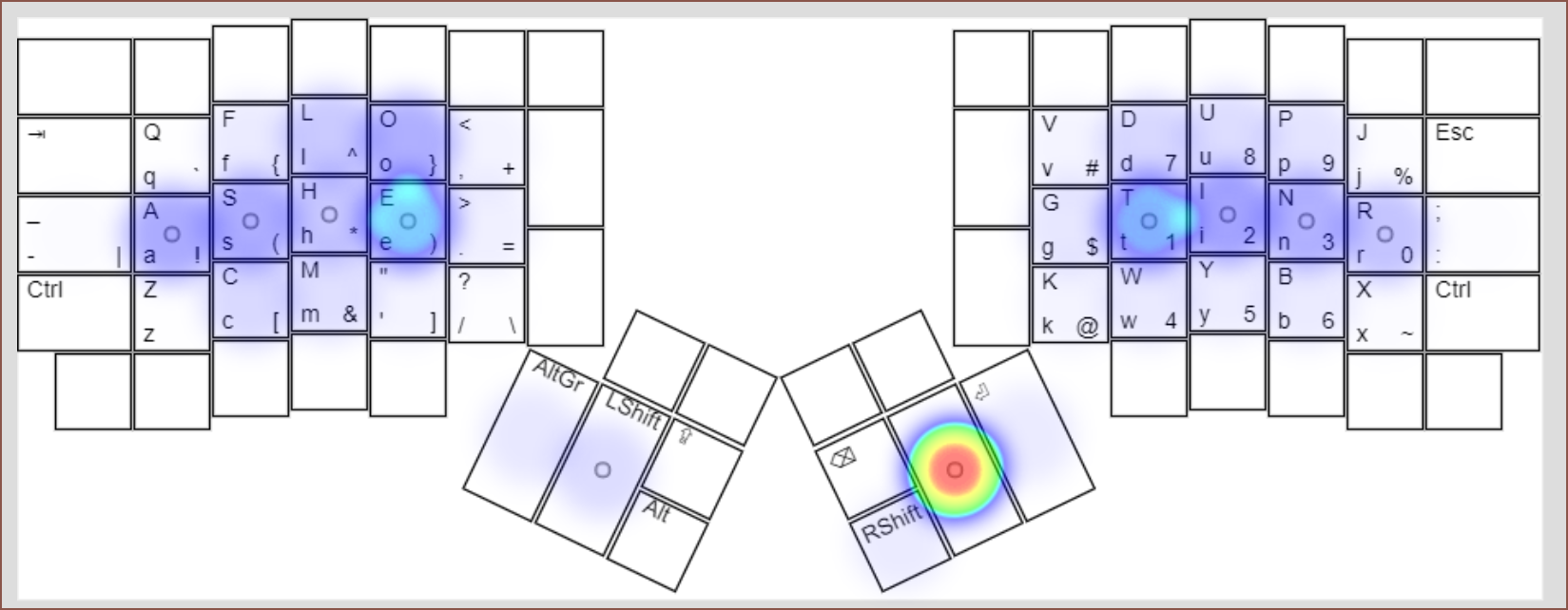
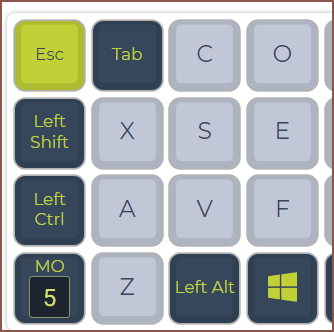
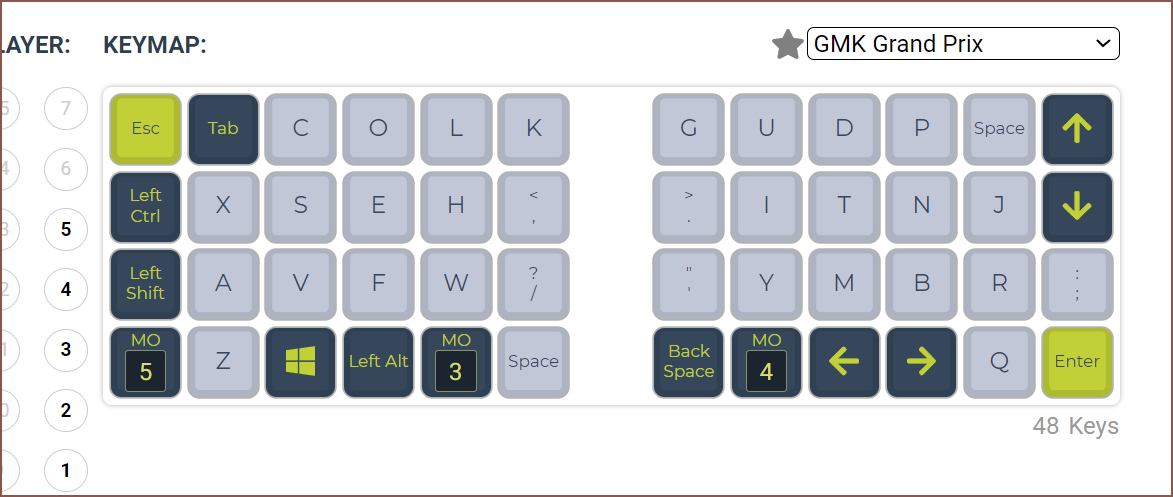

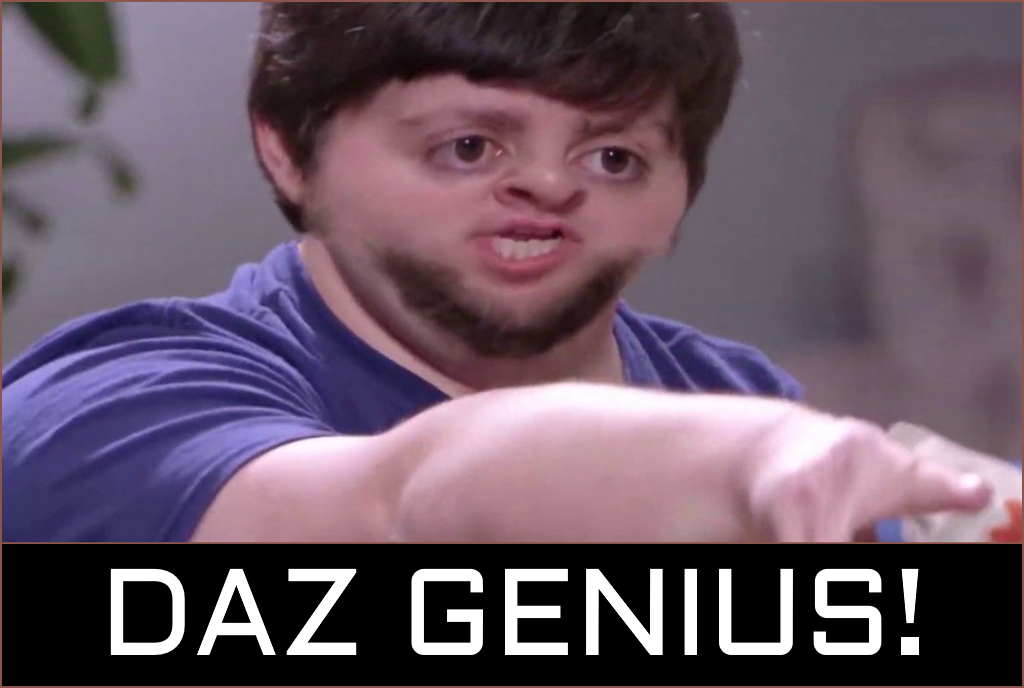
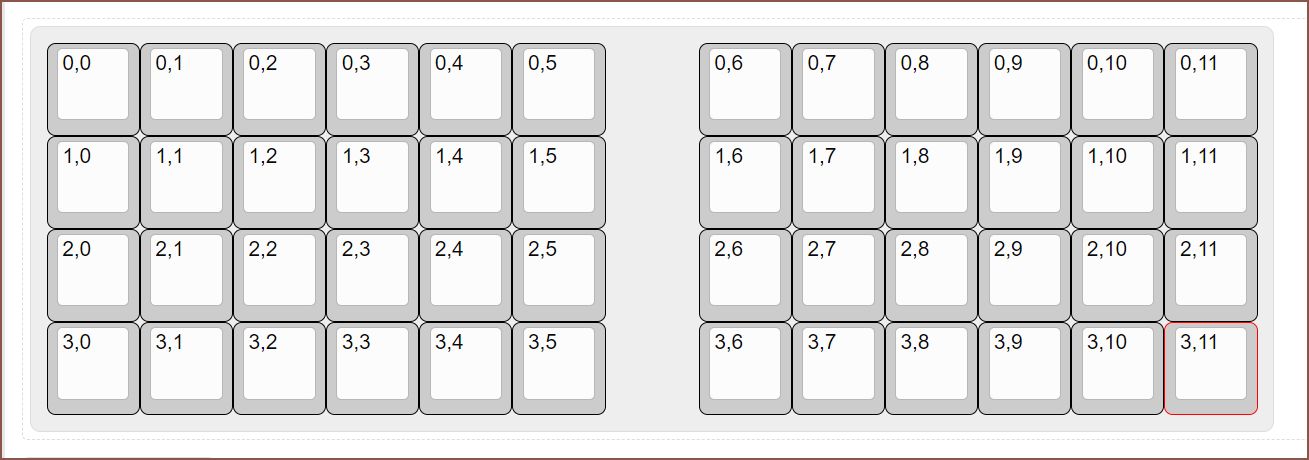
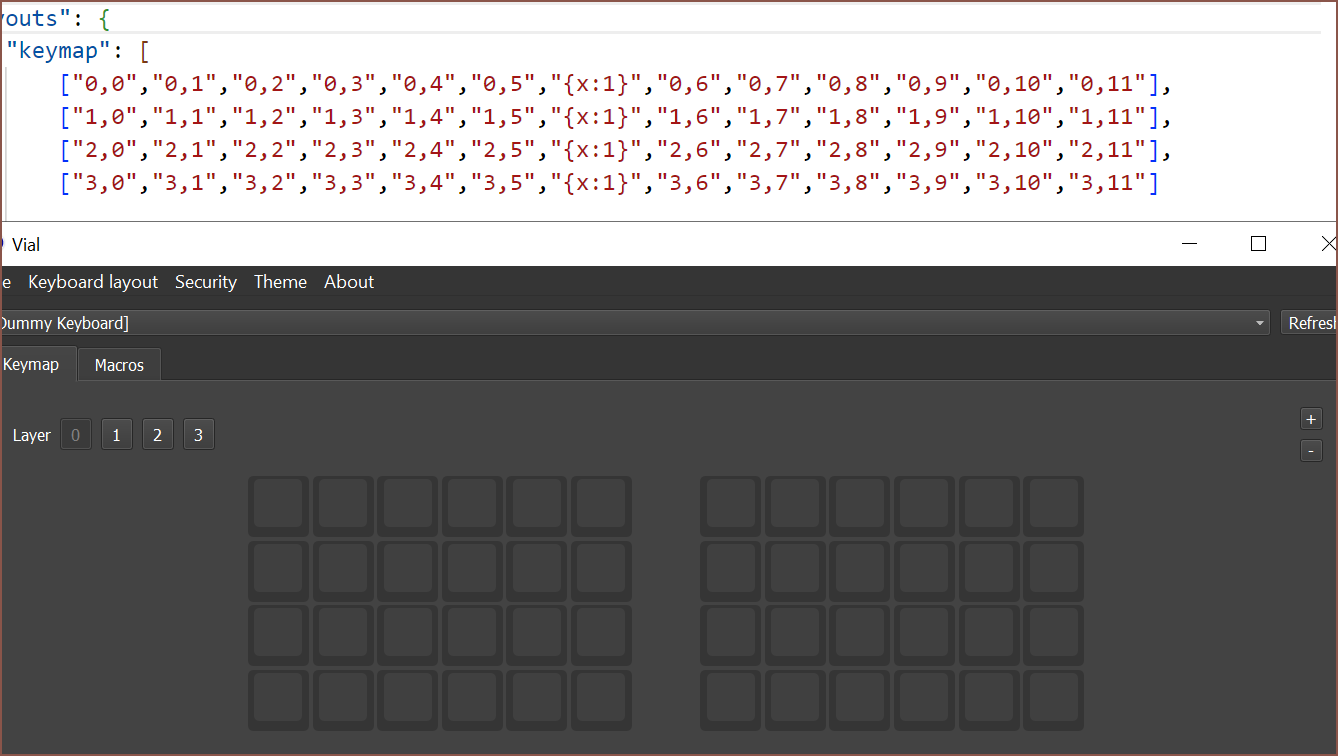

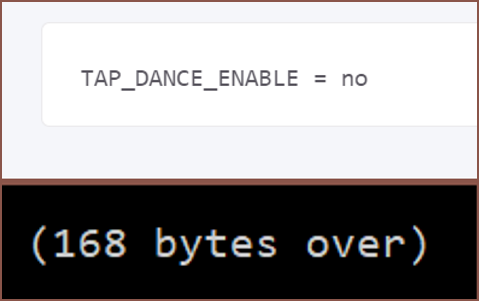 ANGUISH!!!
ANGUISH!!!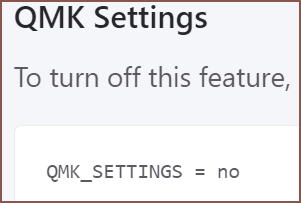
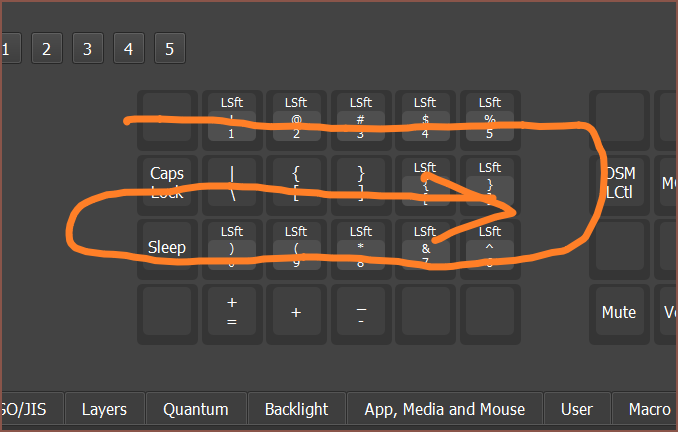
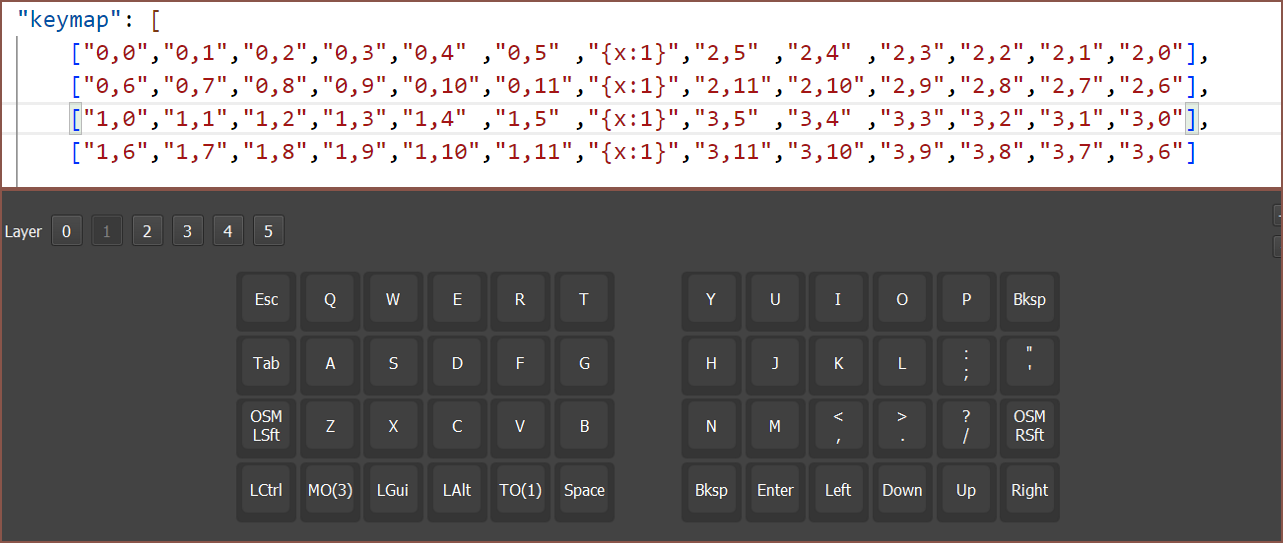
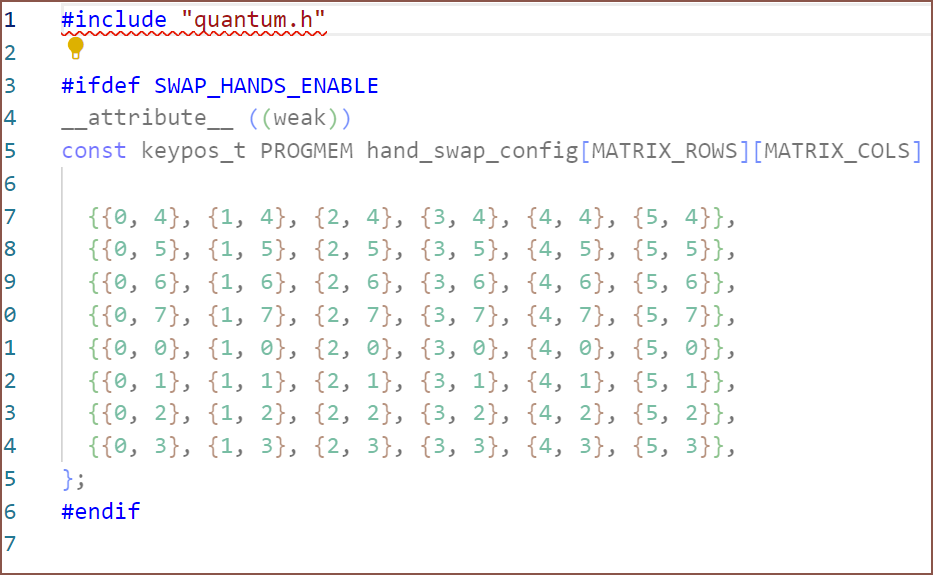
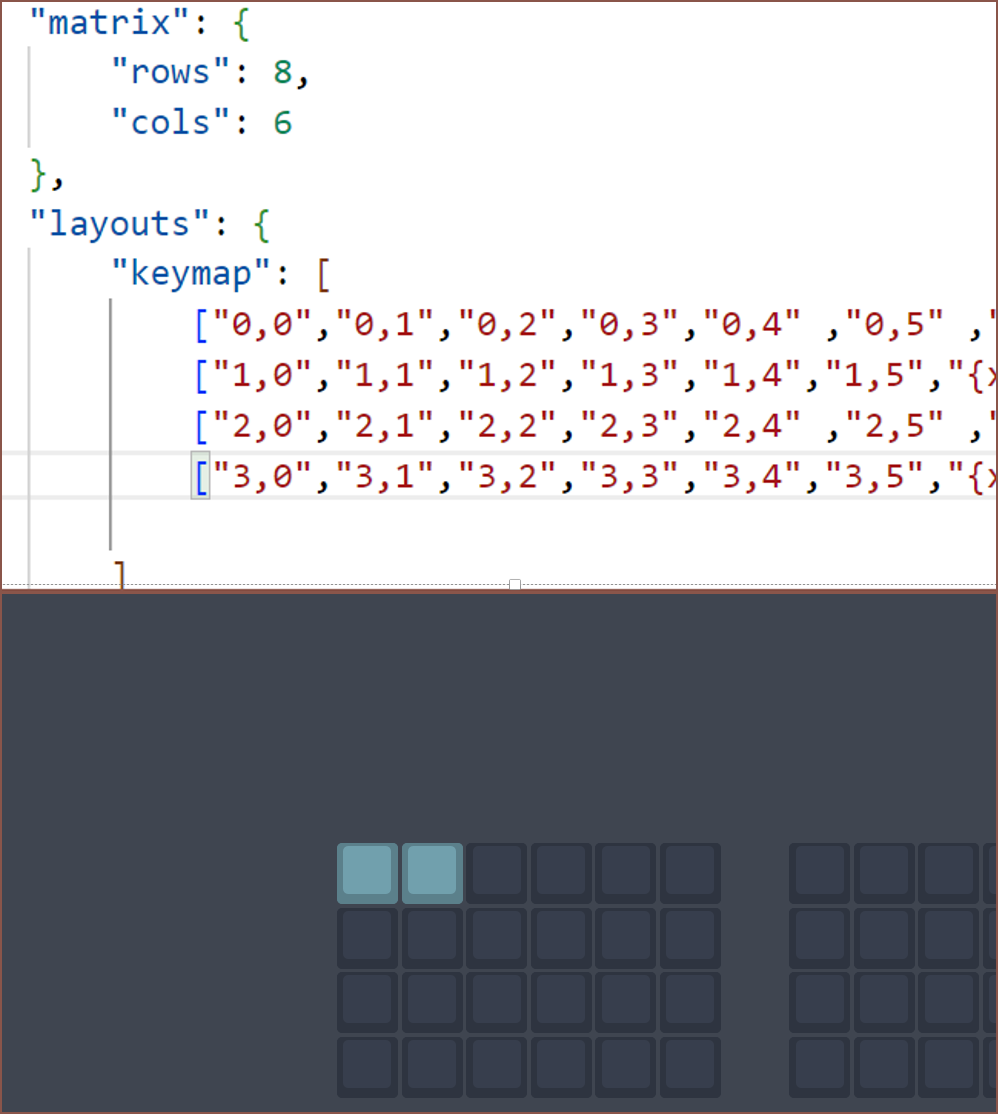
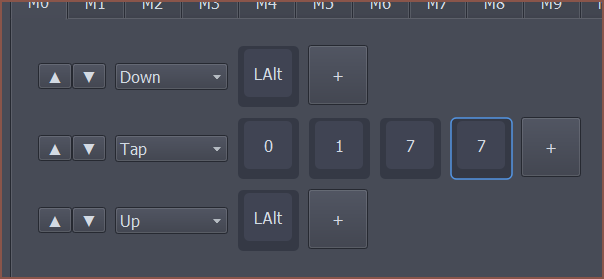

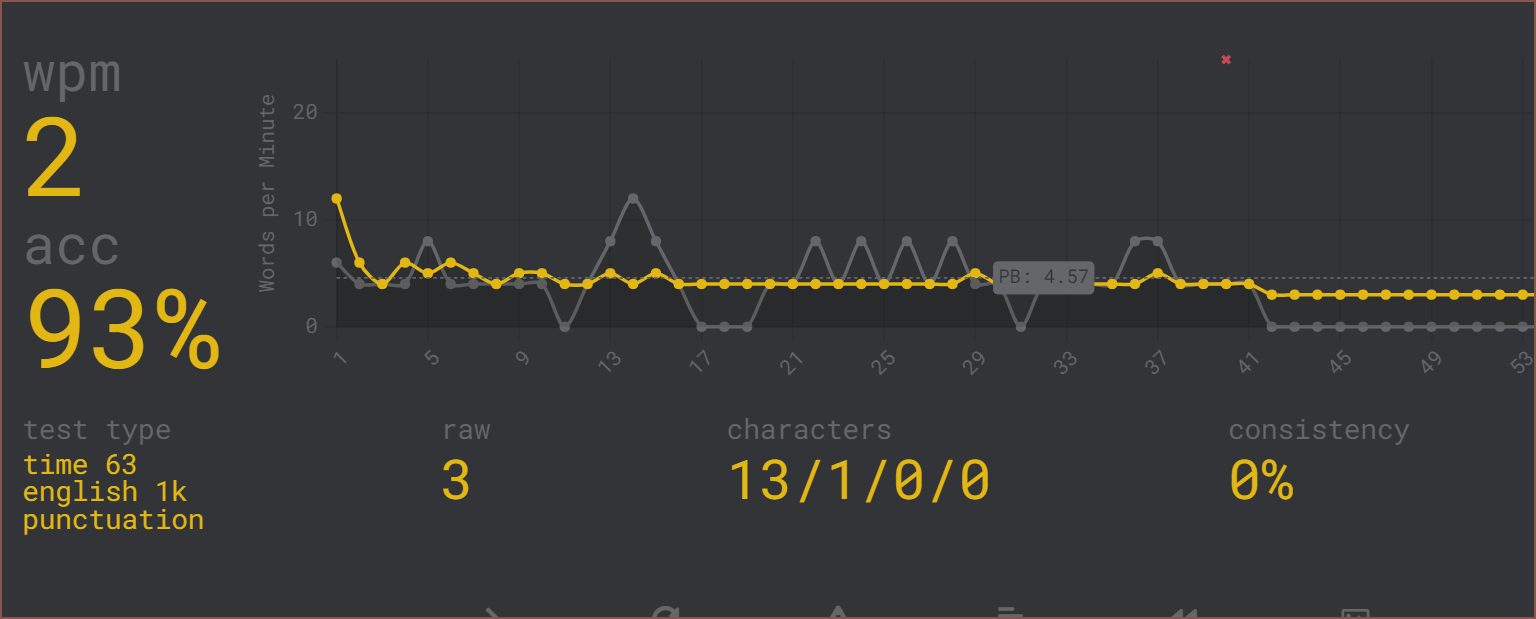

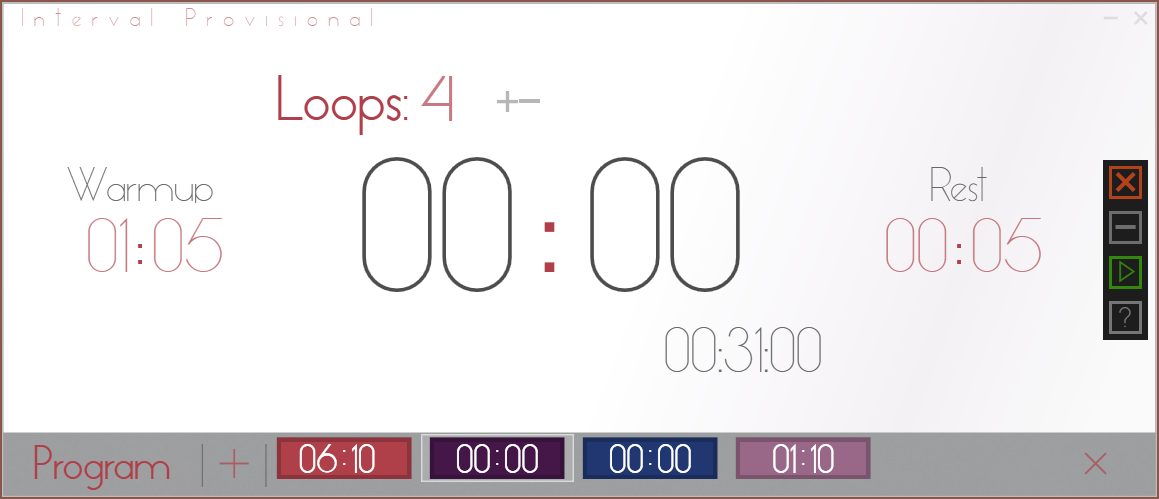

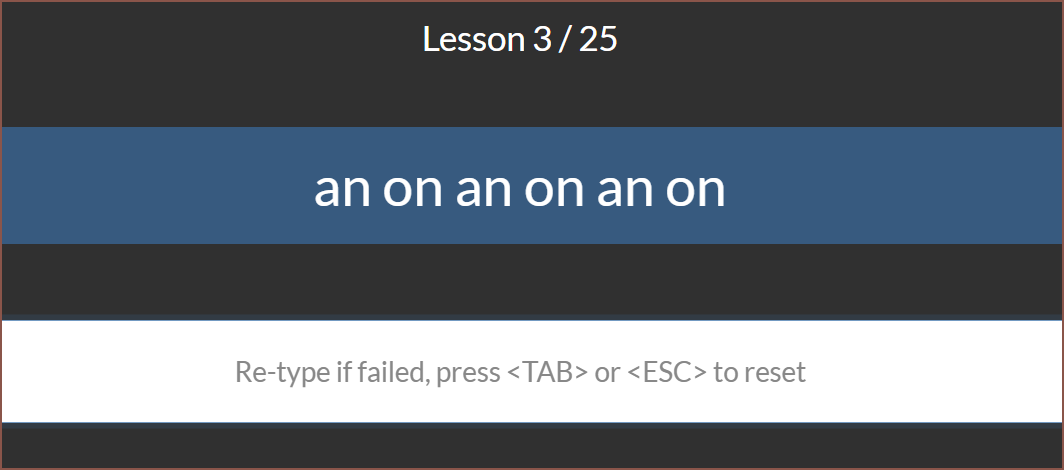
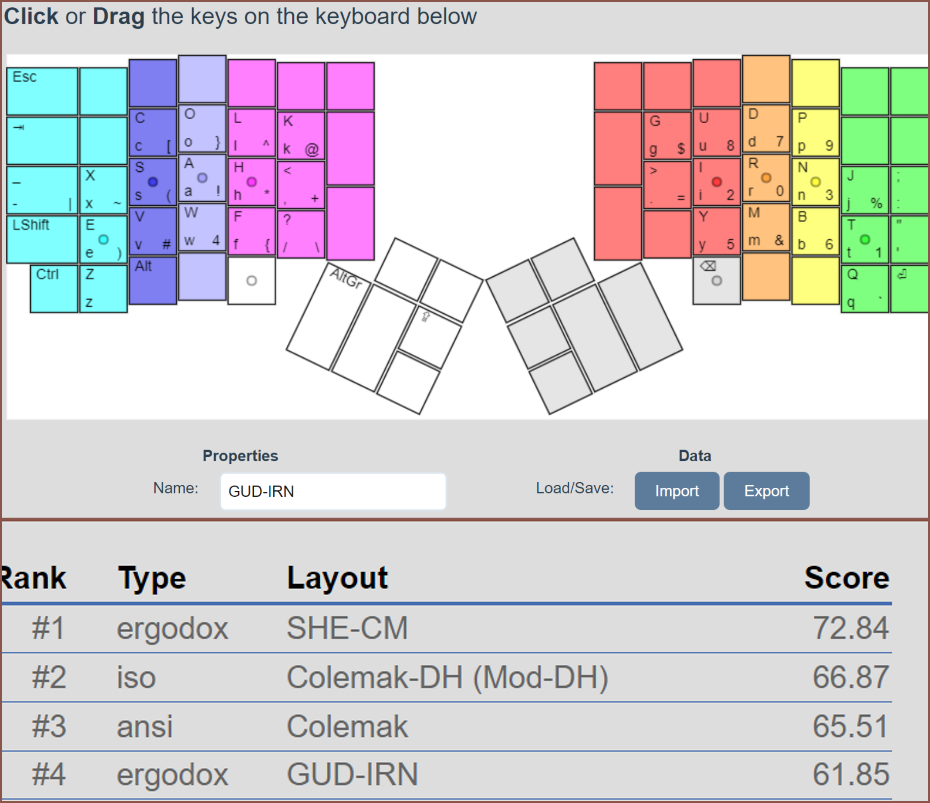

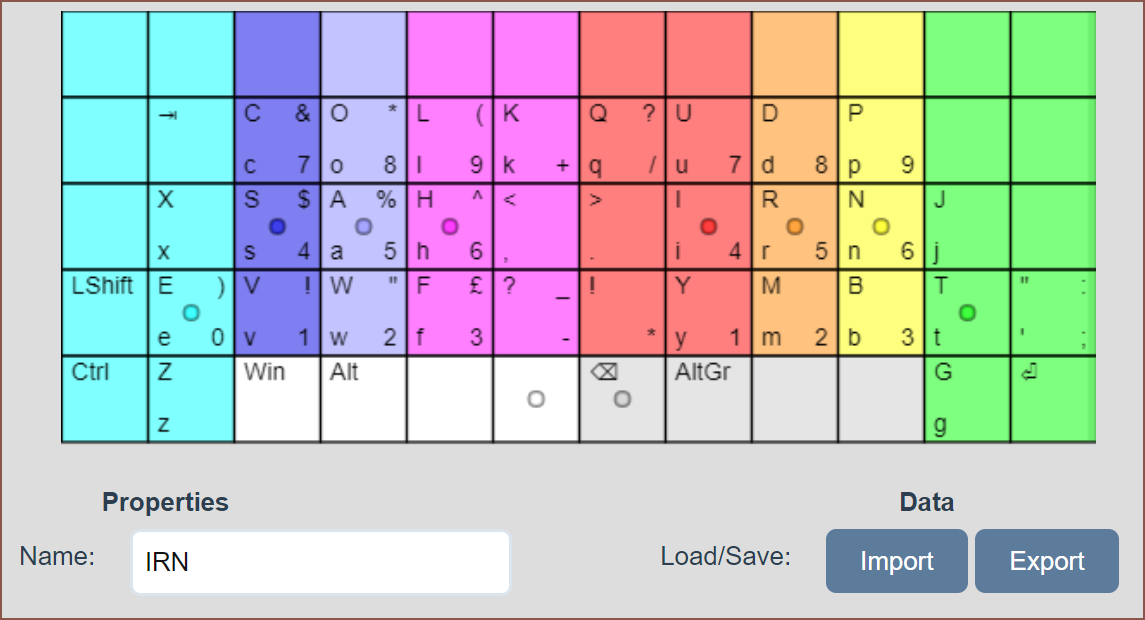
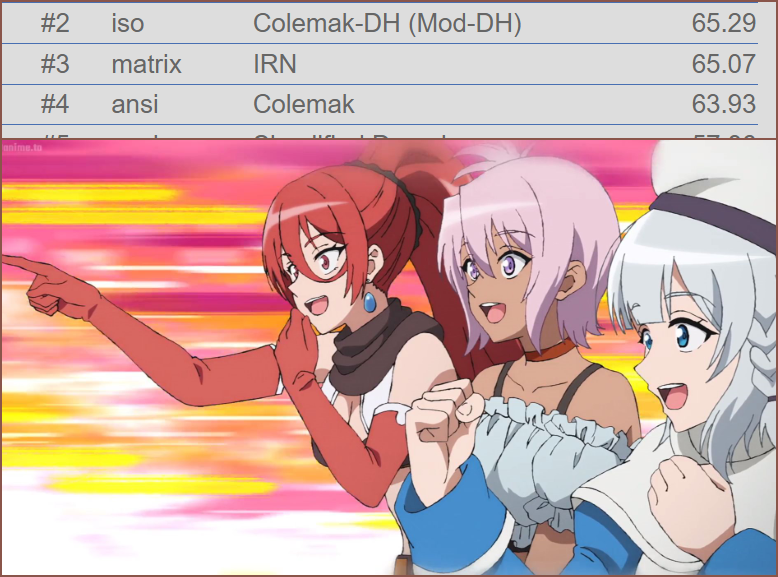
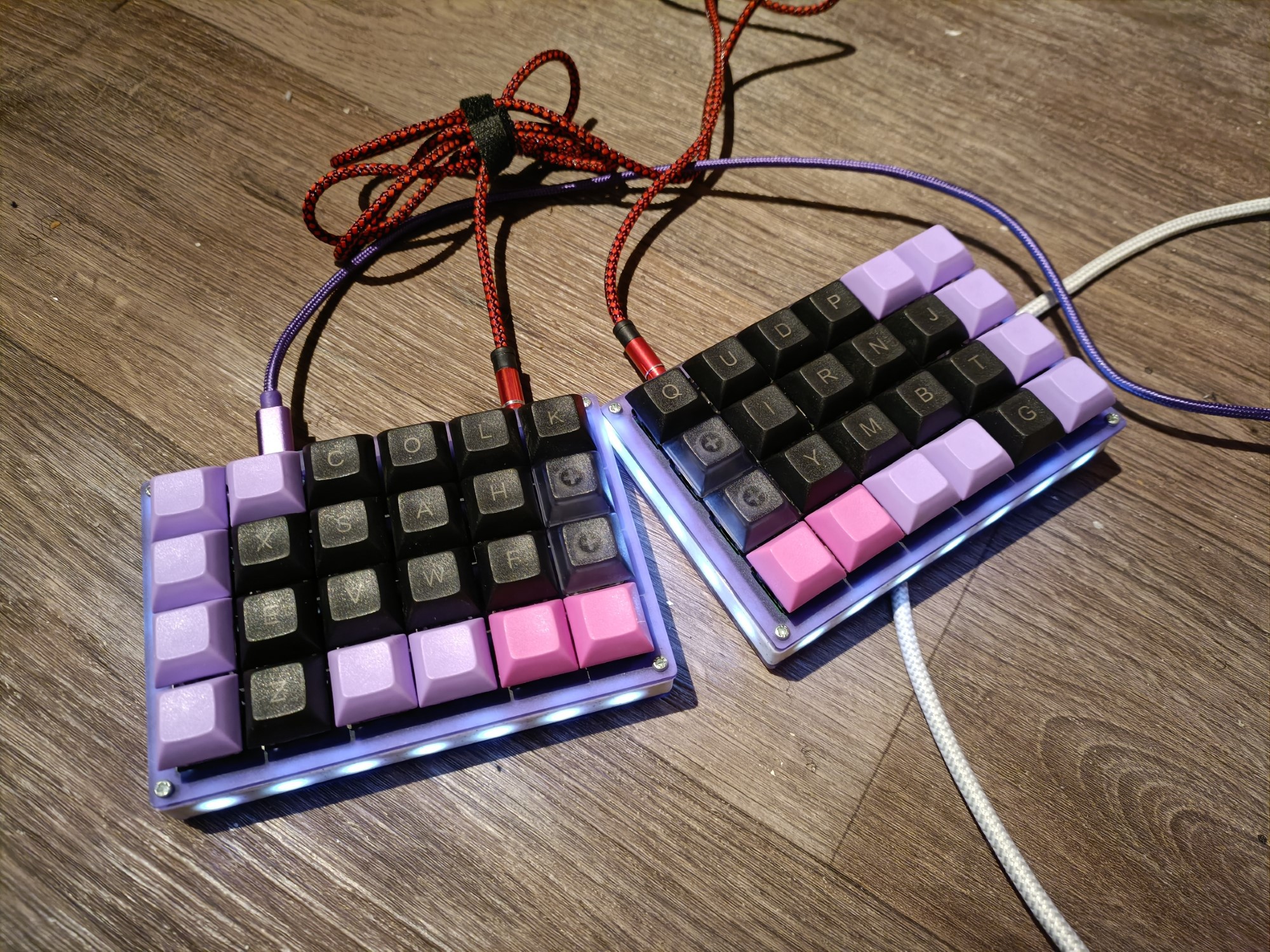
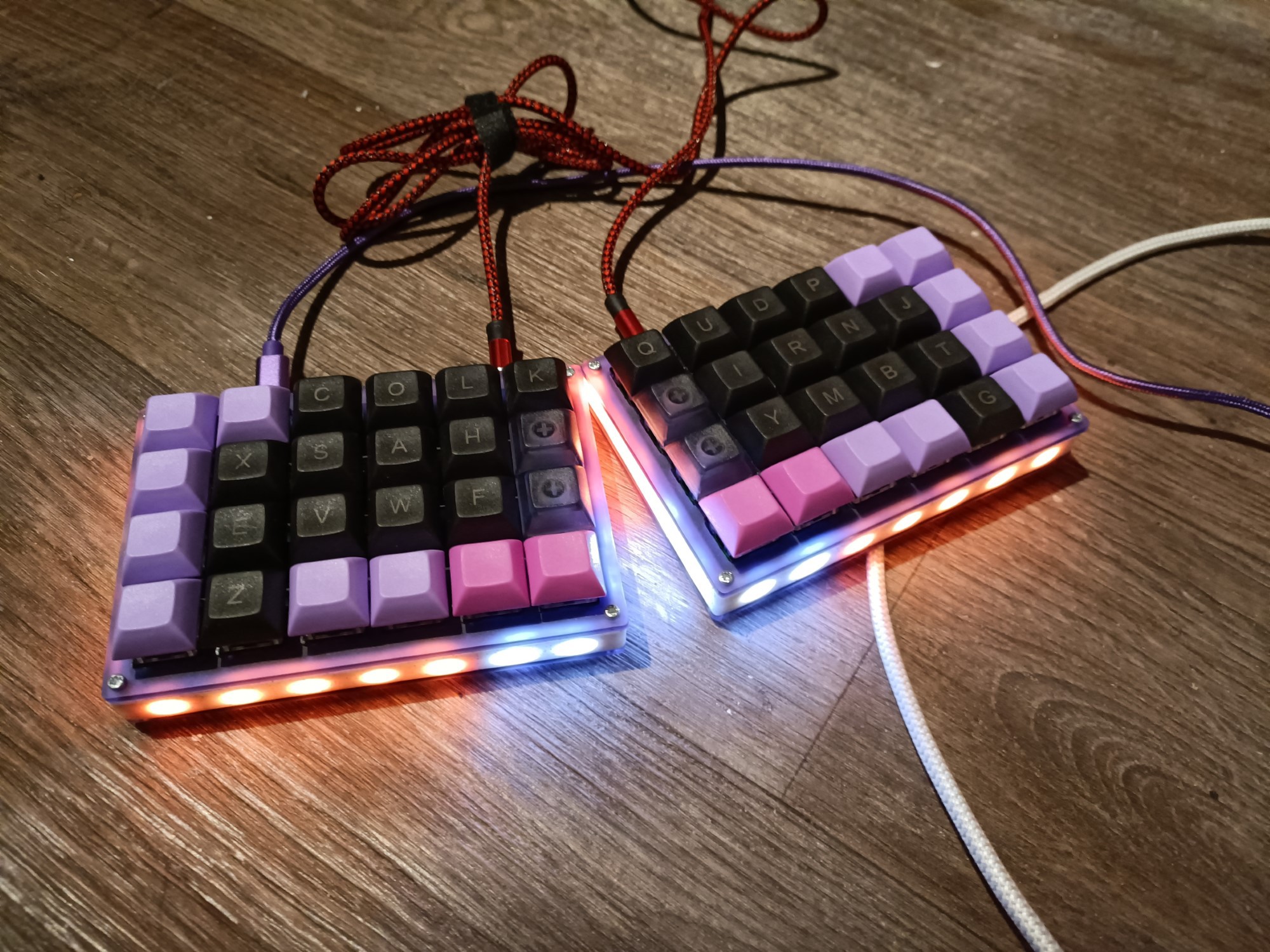
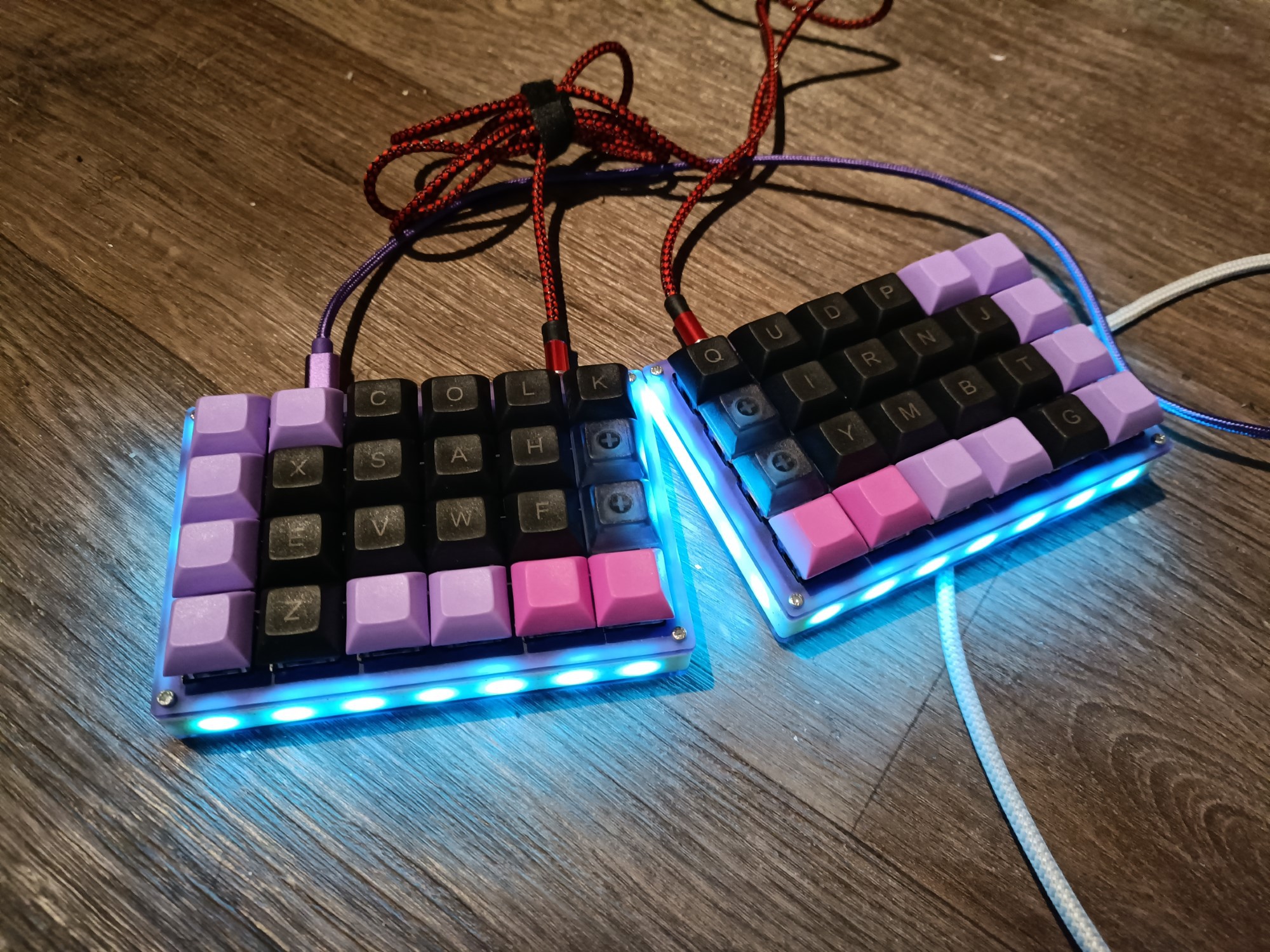





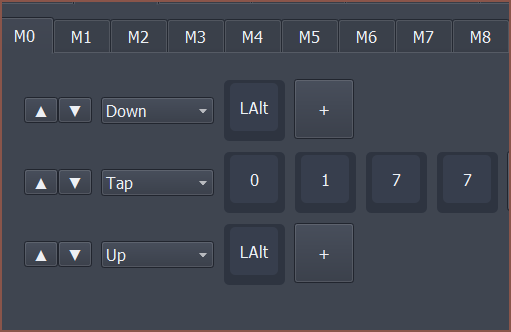
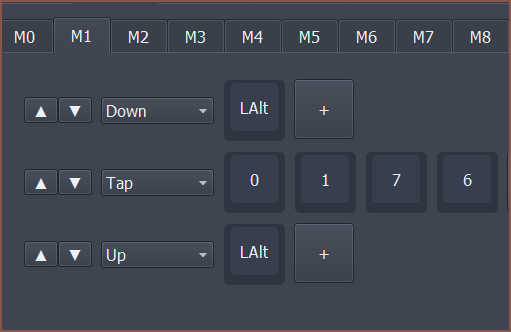
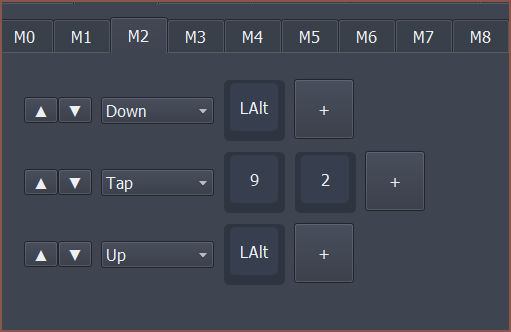
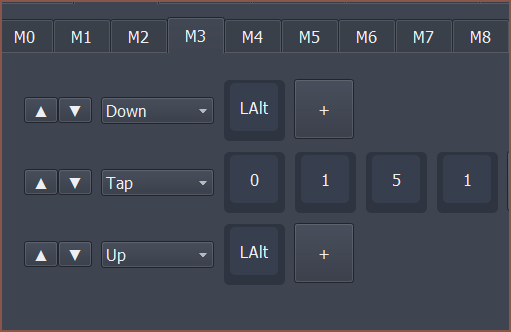
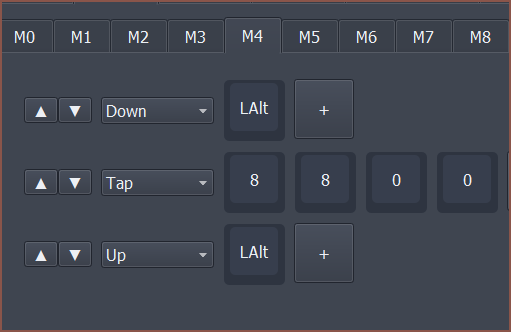


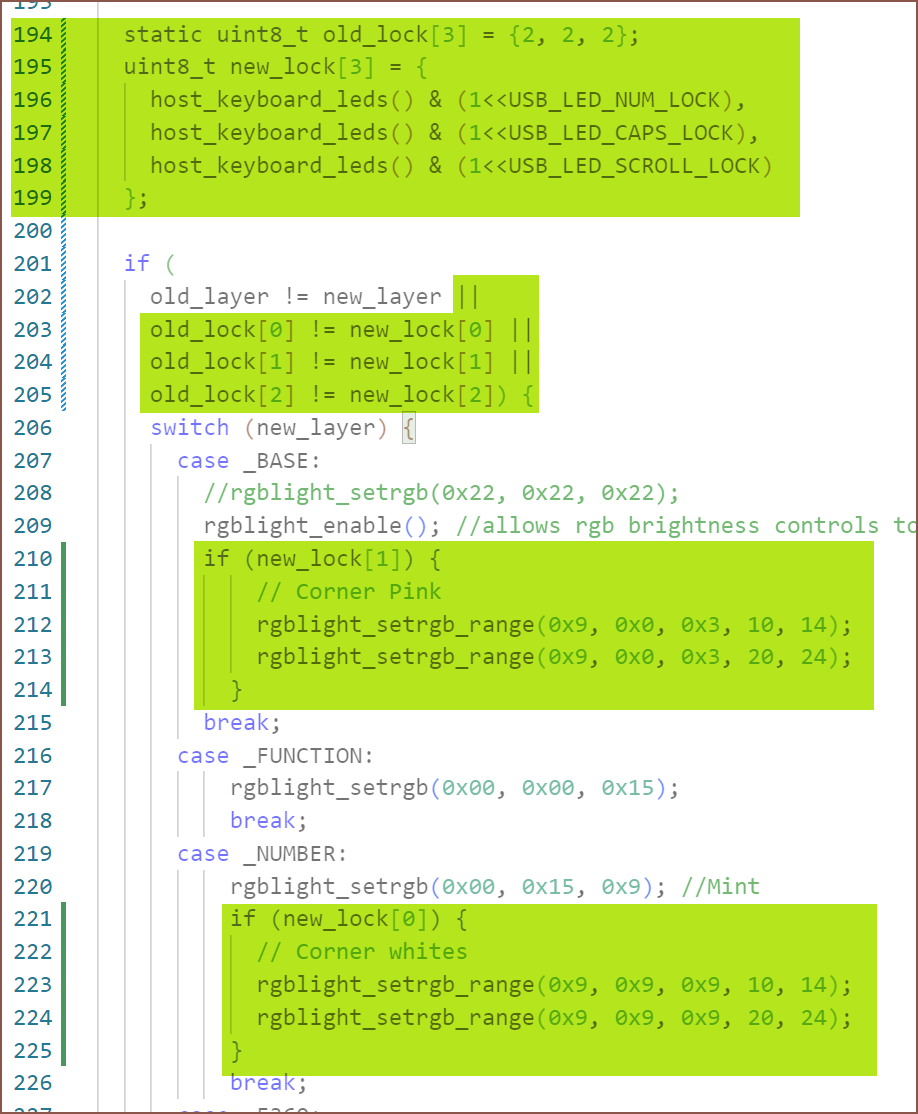
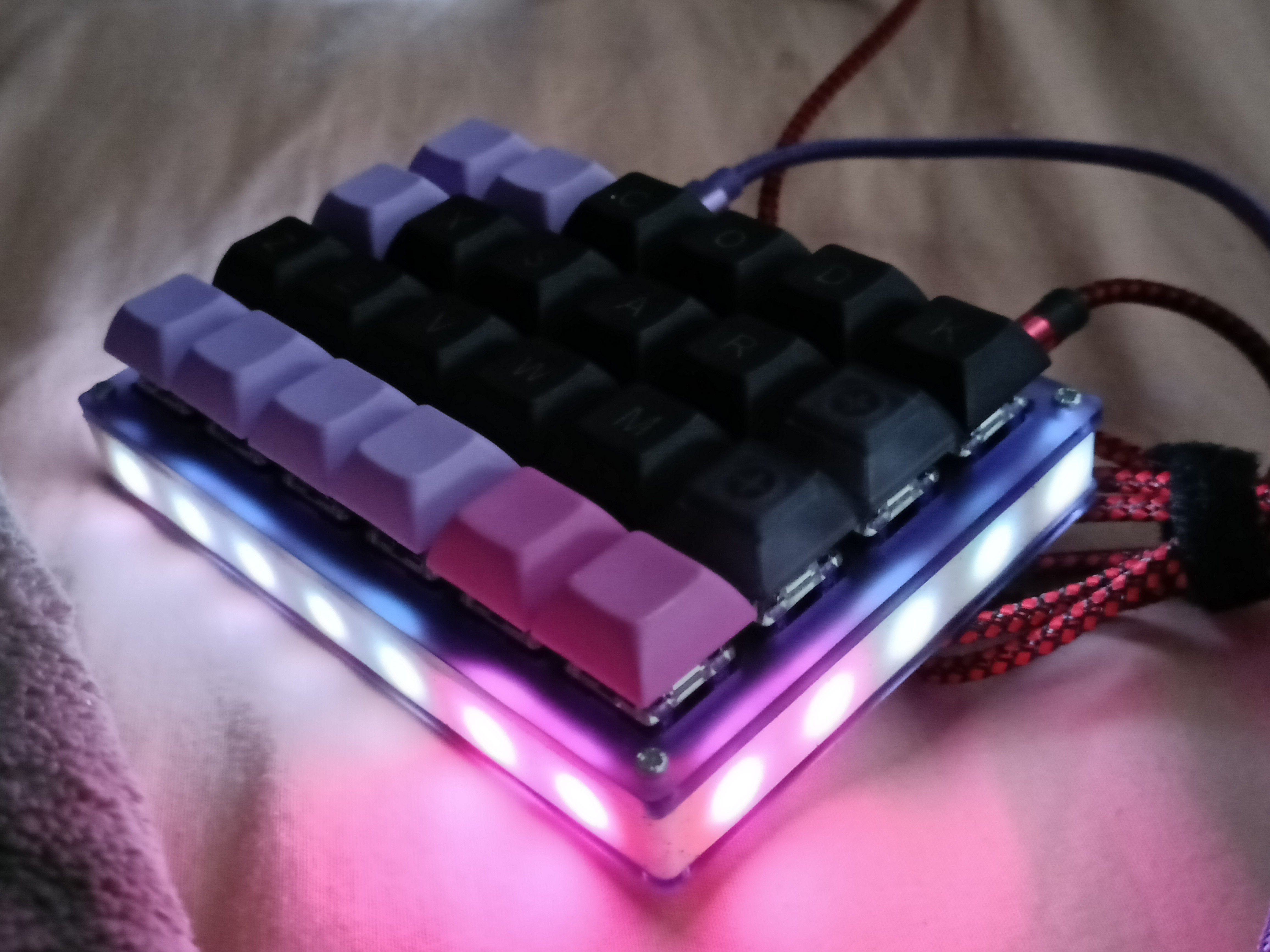
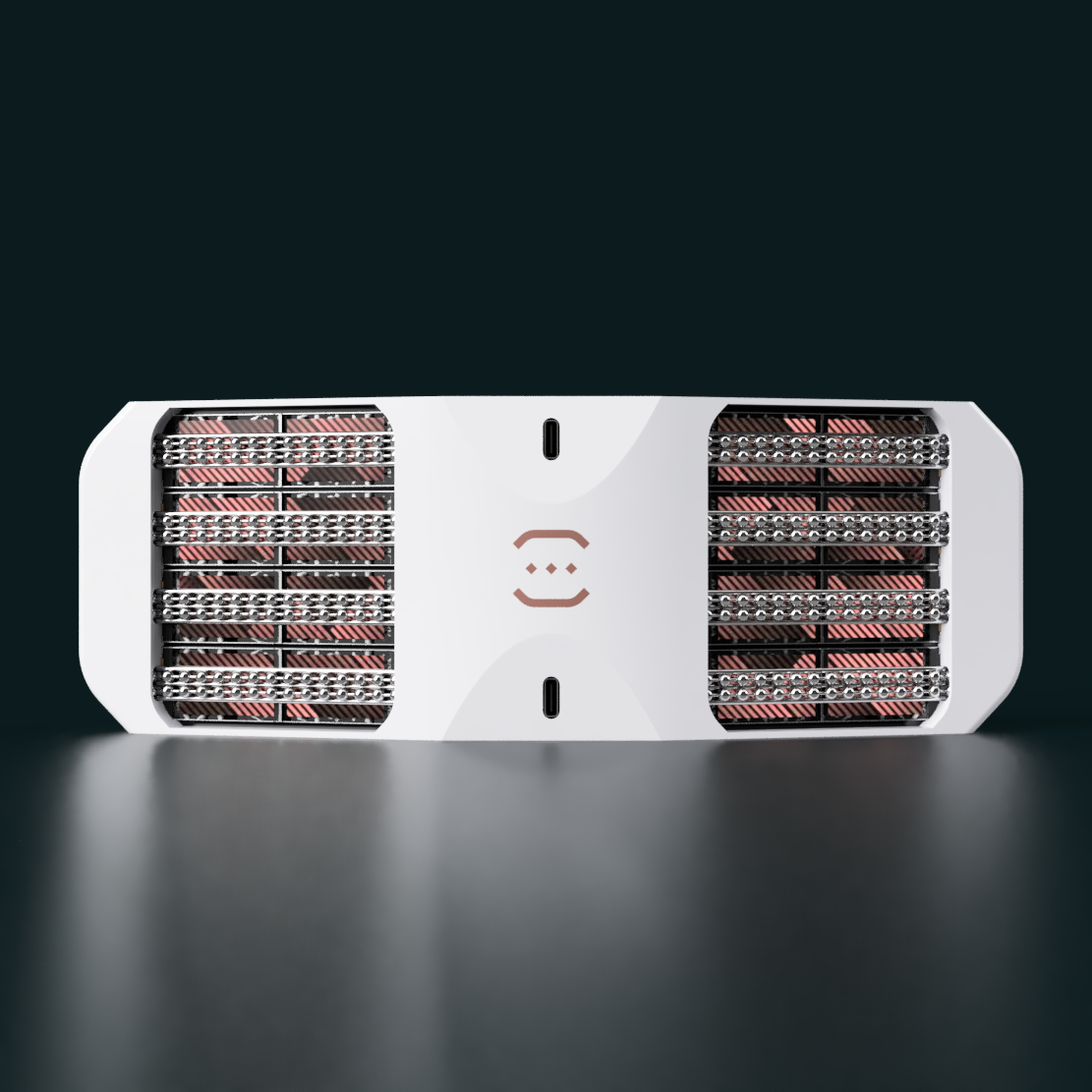
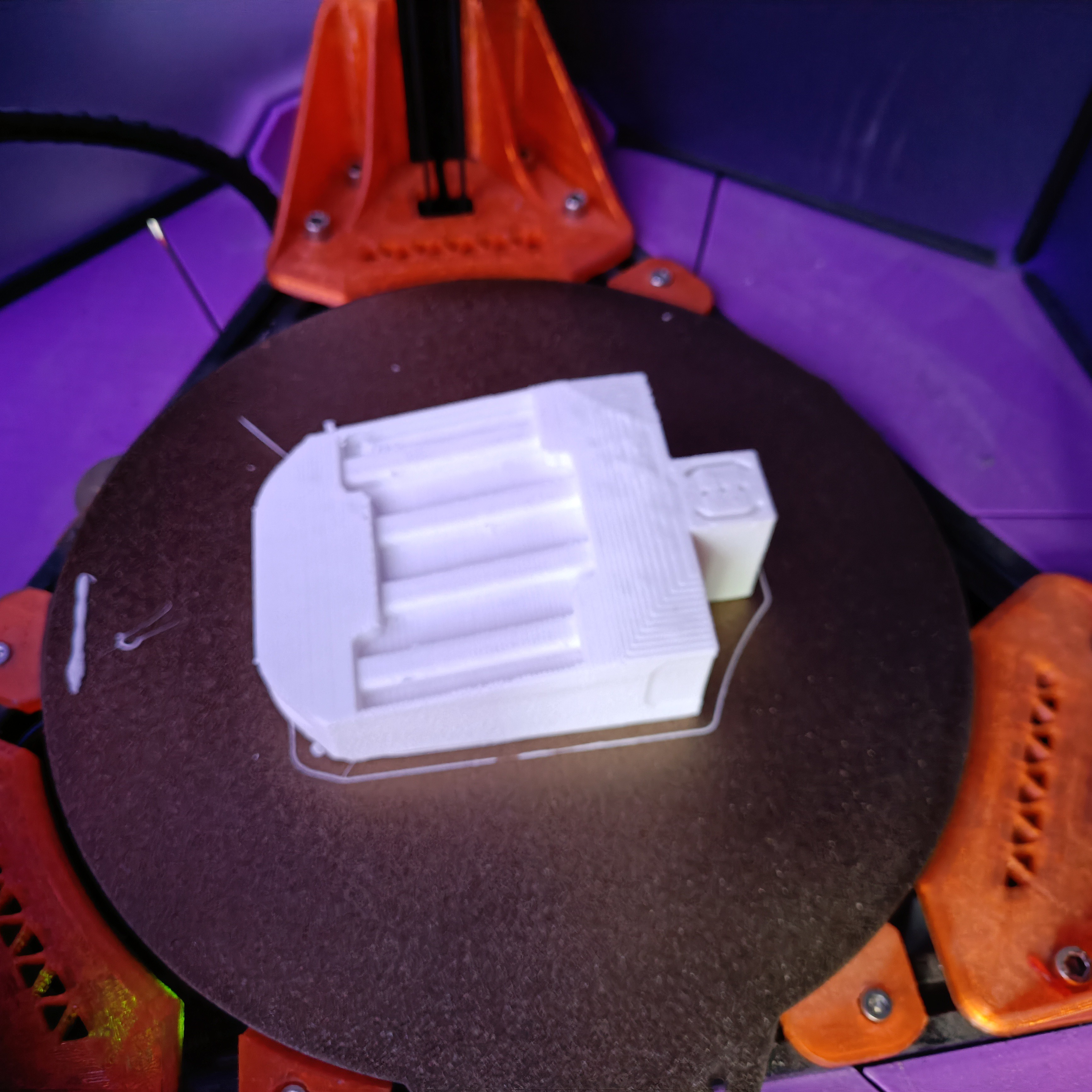
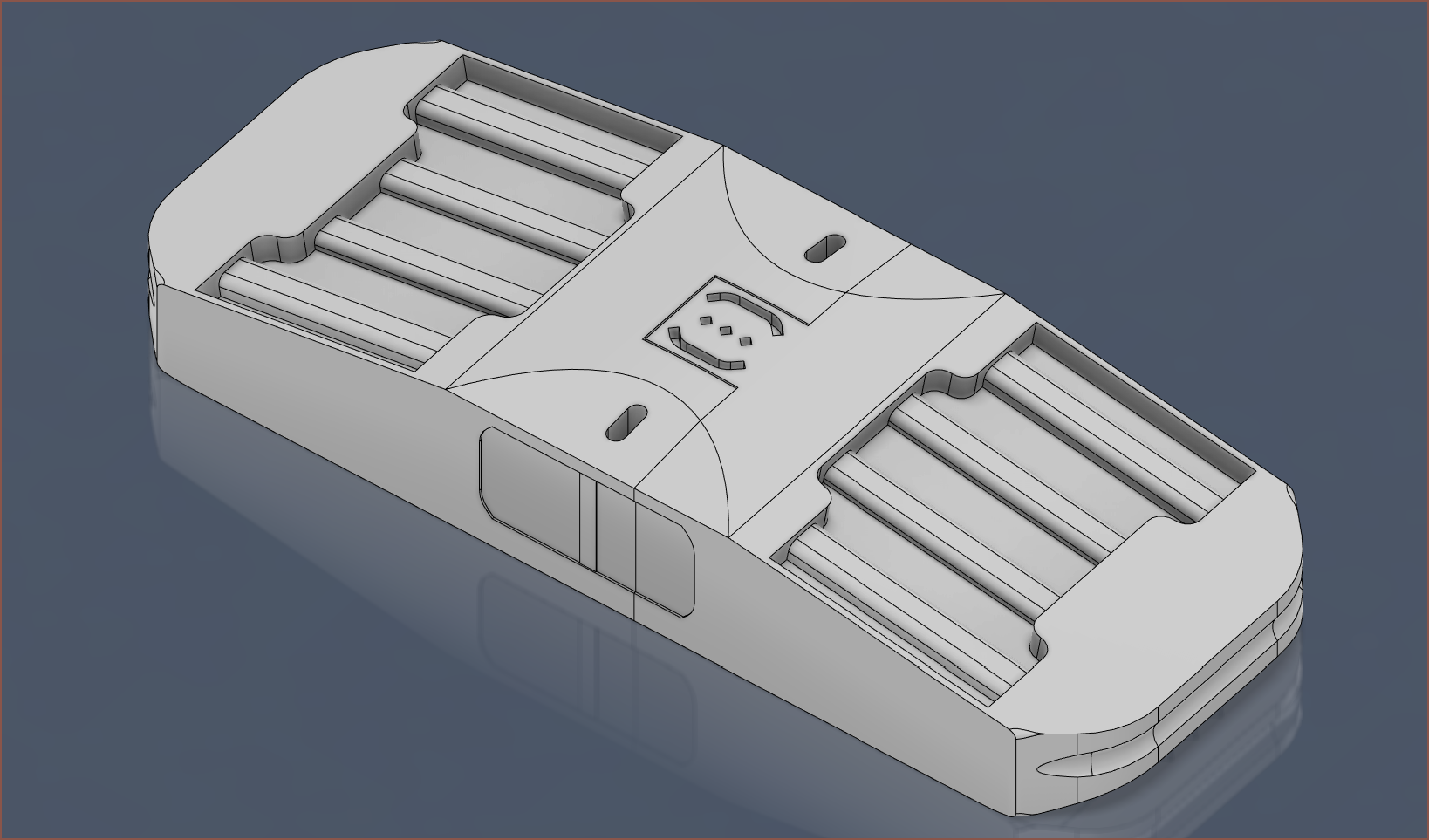
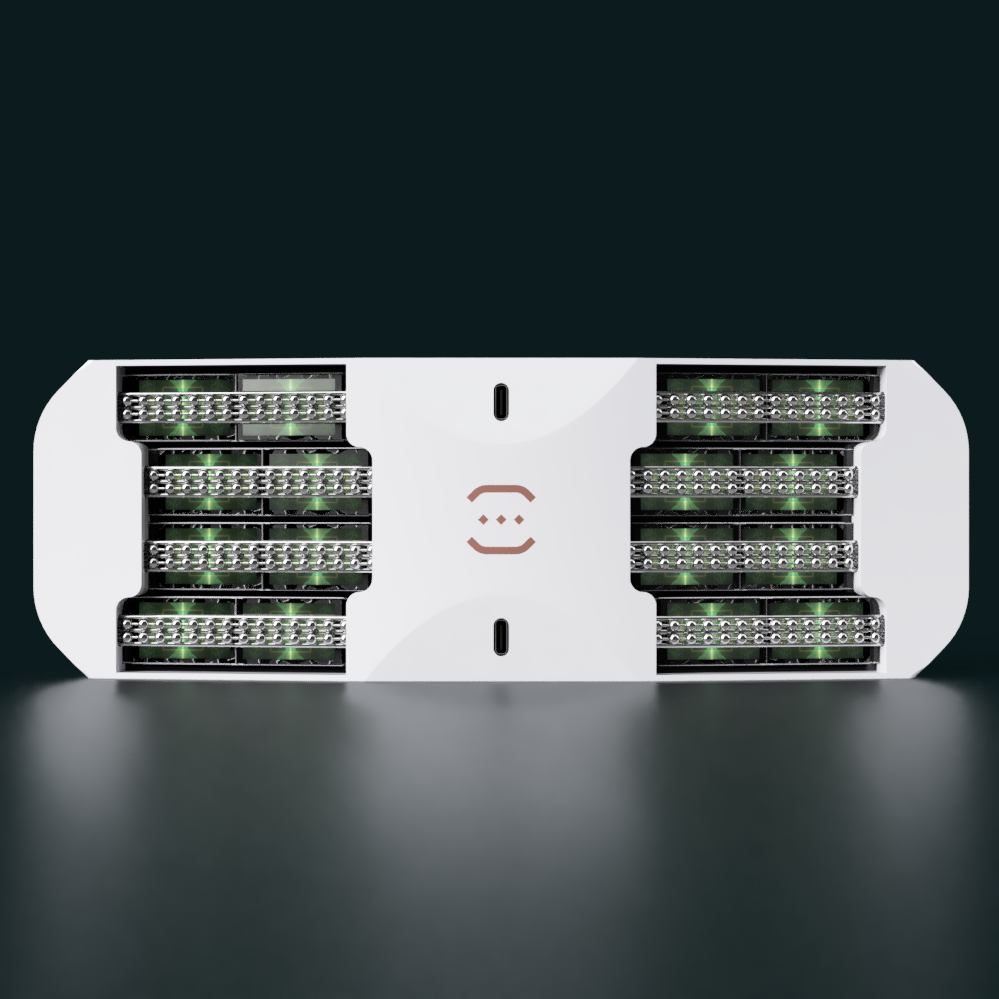 So I was wondering if I should actually enforce a maximum Tetrinsic width of 18mm so that the minimum spacing could be 19.2mm. The 1.14" LCD can be doubled up to obtain a 62mm active length Tetrinsic, though the screen itself has a lower color gamut and brightness than the 1.47" (65K 400nits vs 262K 600nits). The above Tetent is 248mm long.
So I was wondering if I should actually enforce a maximum Tetrinsic width of 18mm so that the minimum spacing could be 19.2mm. The 1.14" LCD can be doubled up to obtain a 62mm active length Tetrinsic, though the screen itself has a lower color gamut and brightness than the 1.47" (65K 400nits vs 262K 600nits). The above Tetent is 248mm long.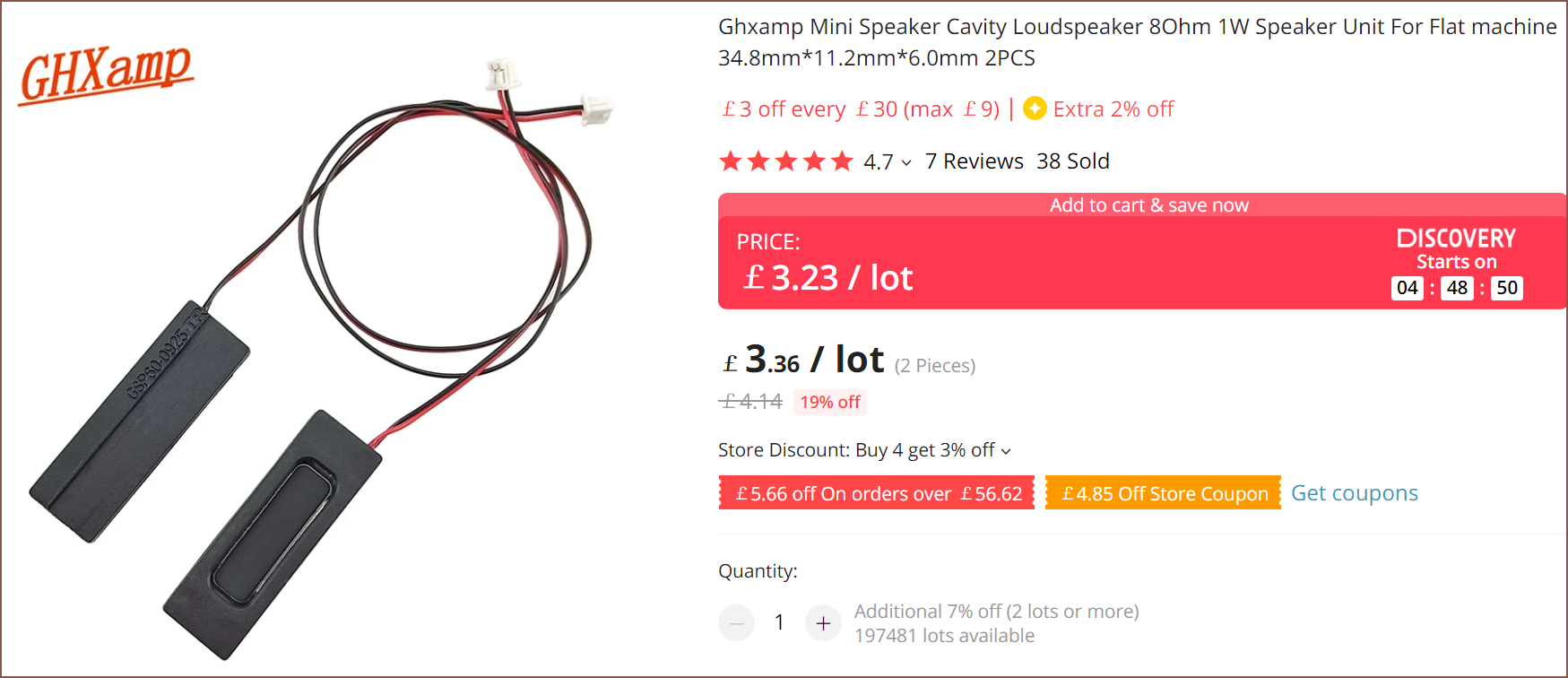
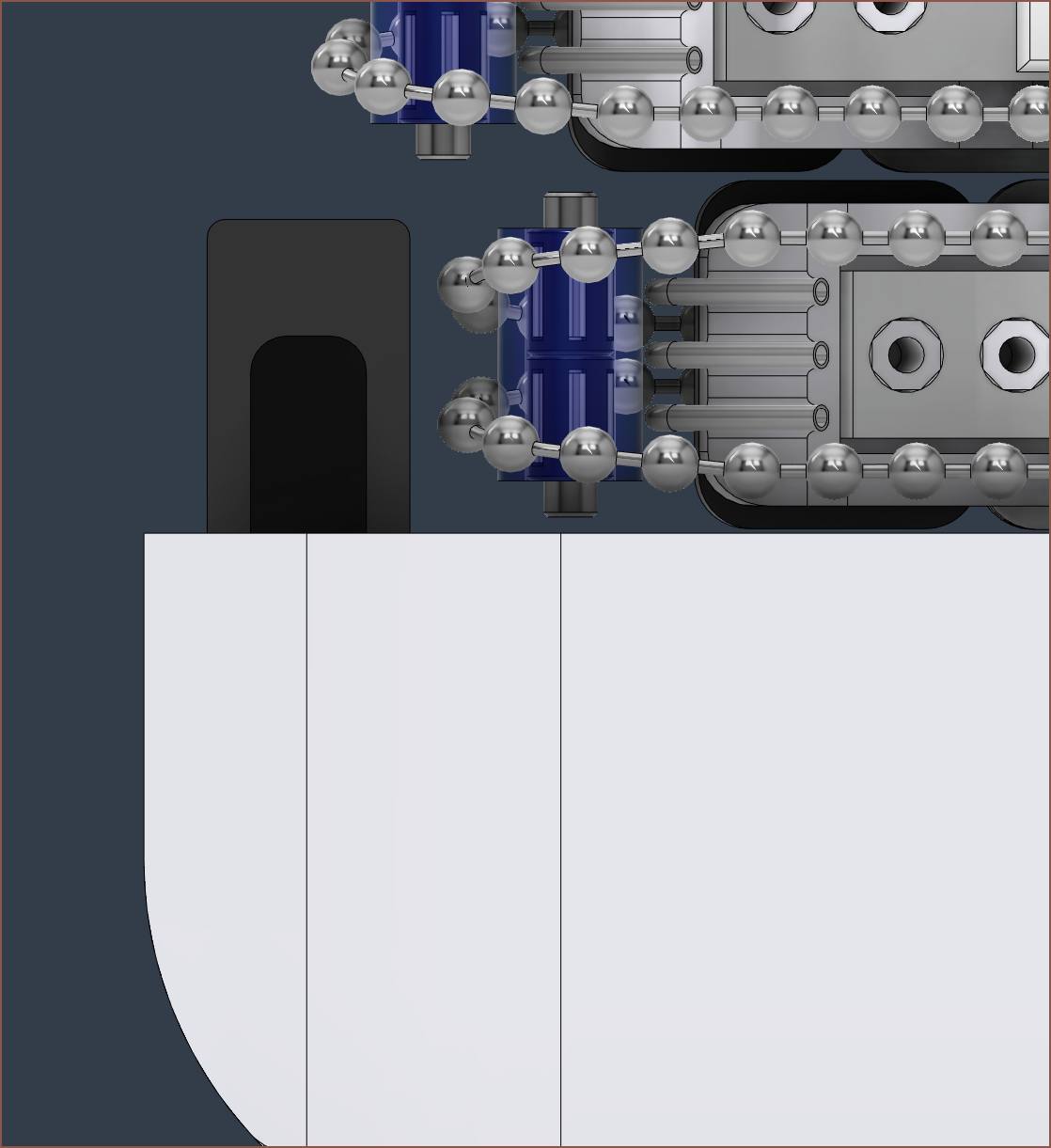
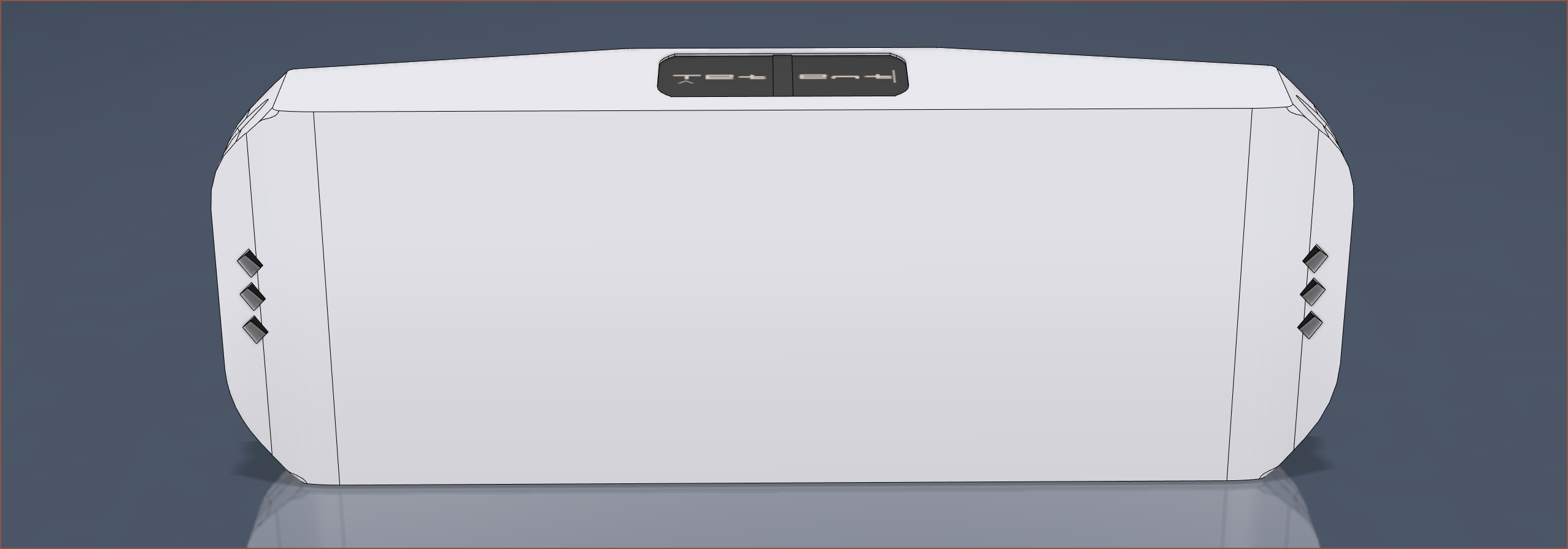
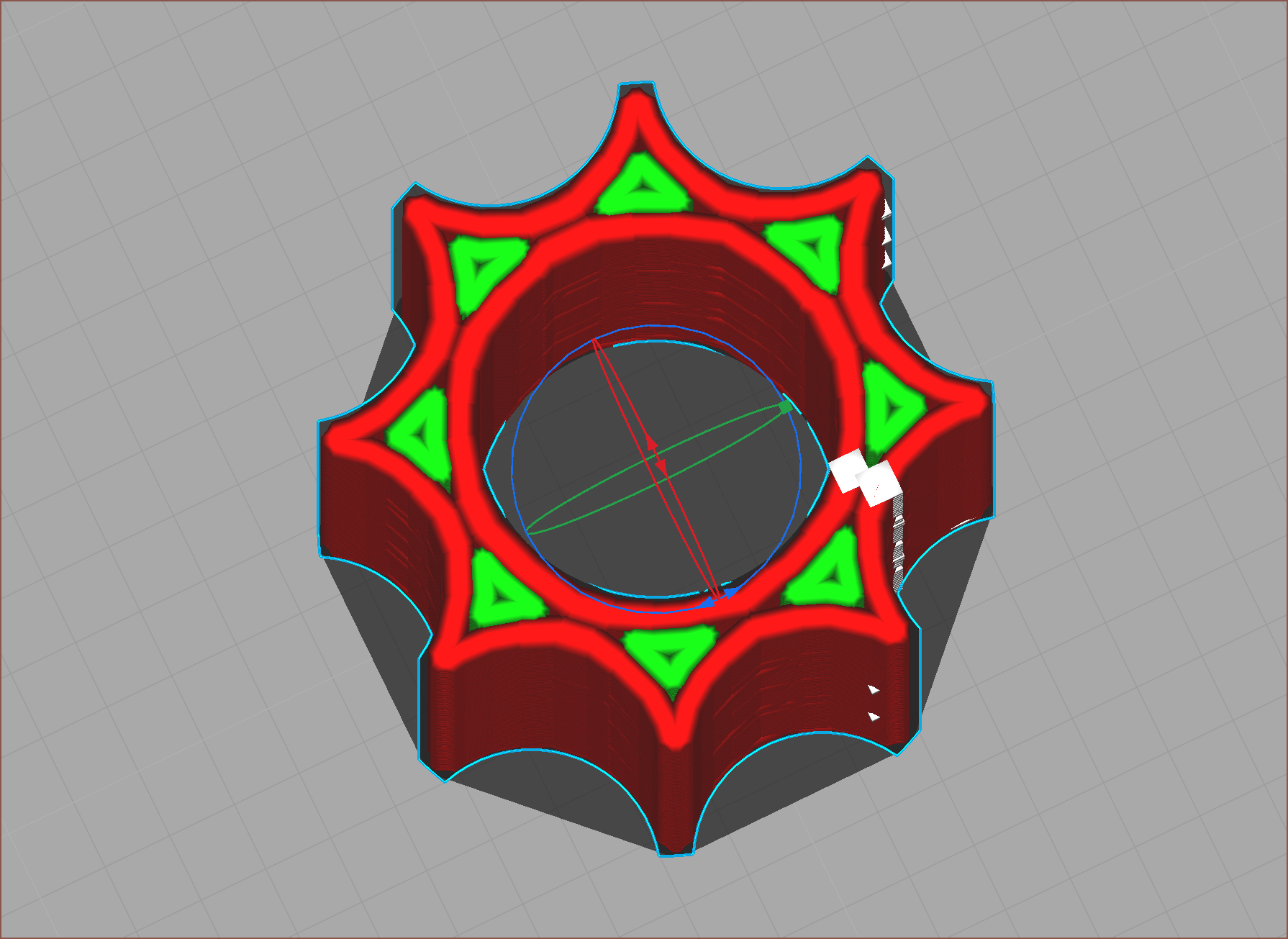
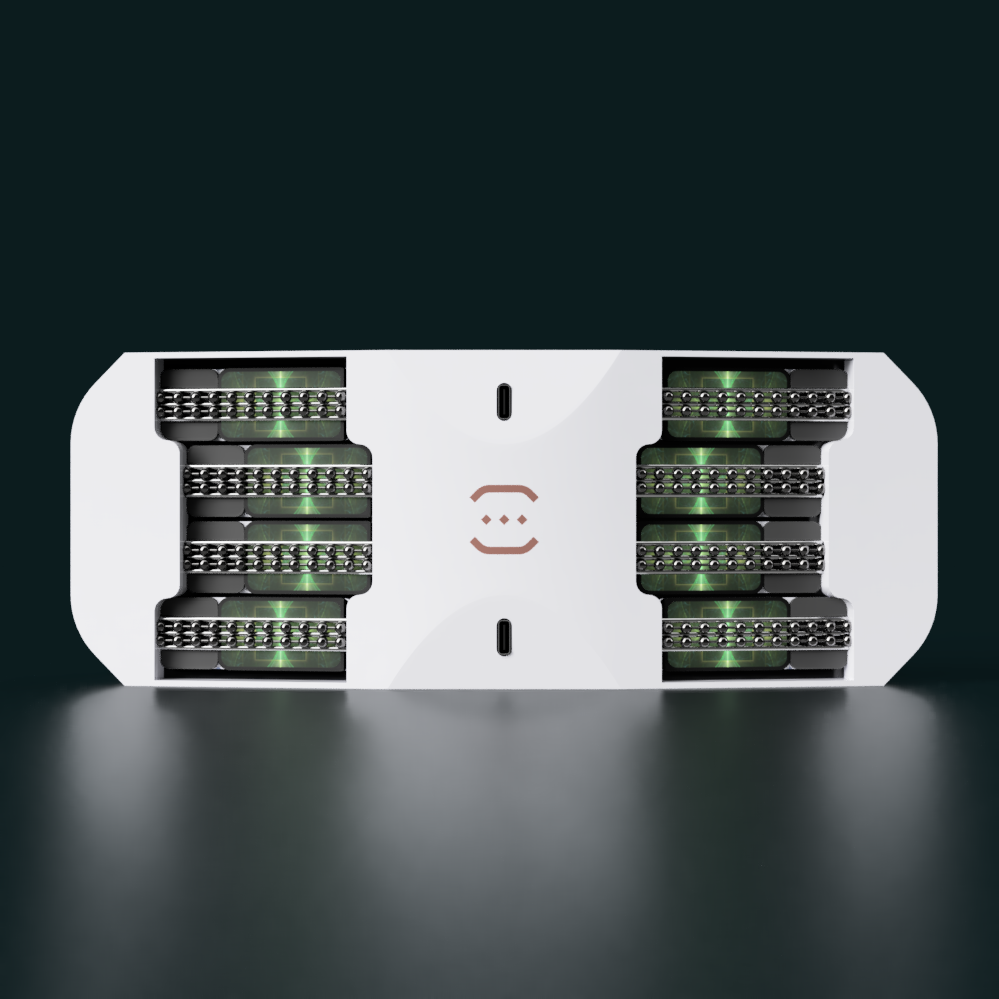
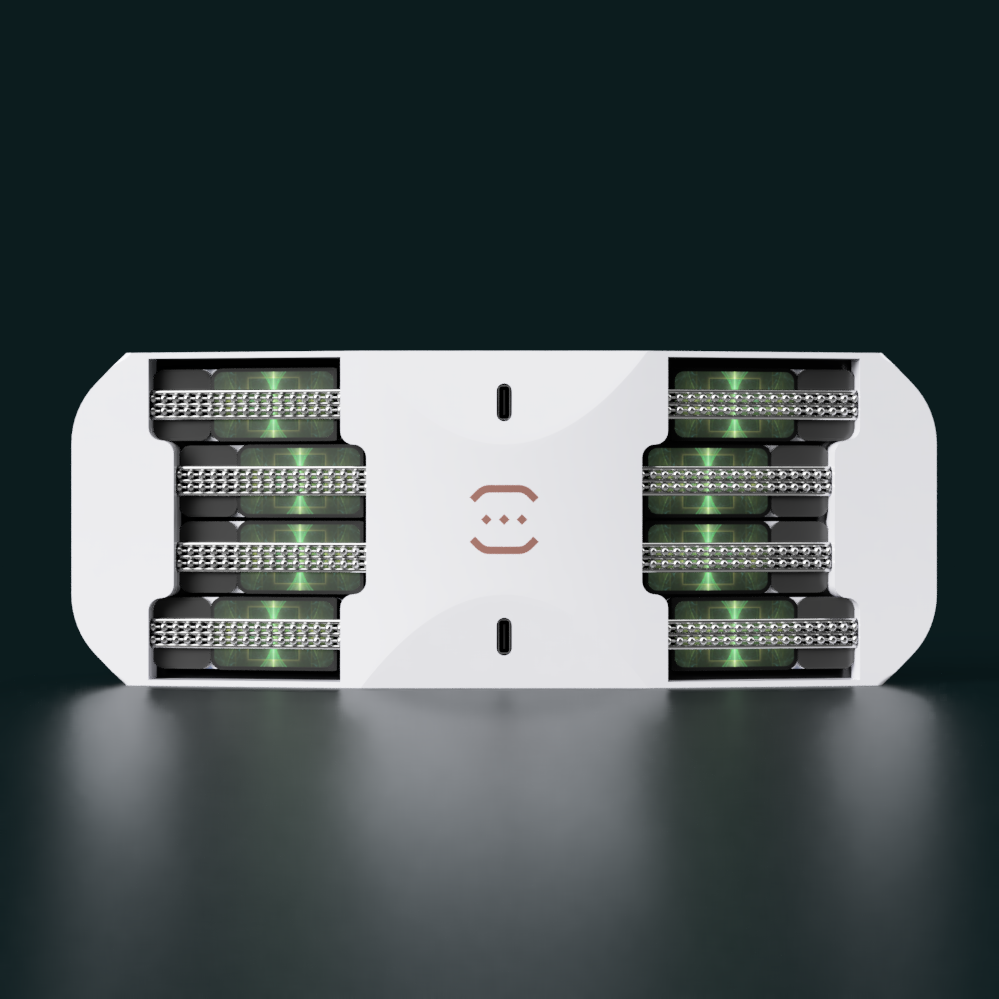
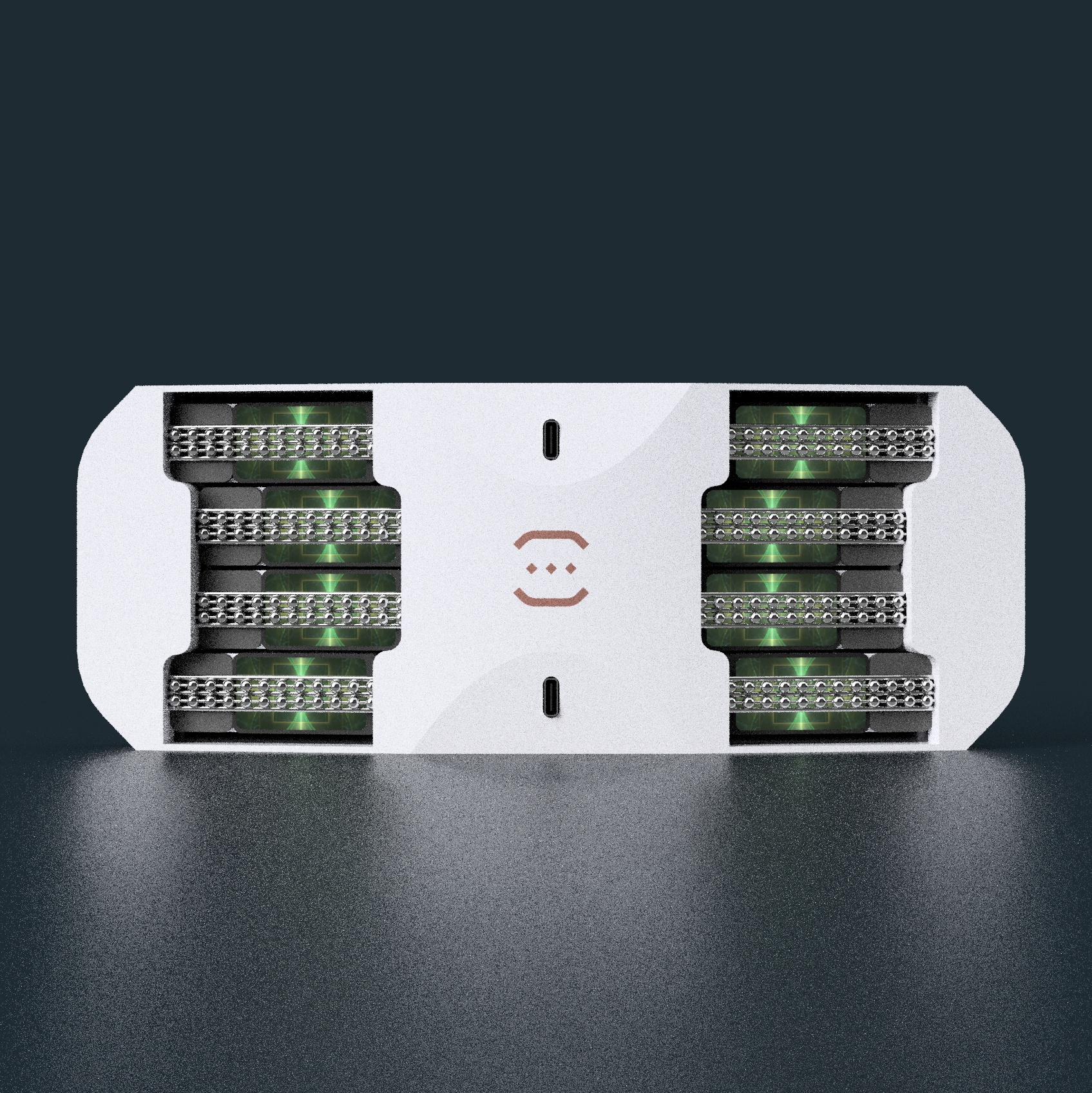
 The first idea was to have a piece that had a dark blue colour to have a similar look to Tetrinsic Taic, which for Tetent I'm just going to shorten to "Tetentaic". I quickly decided to have a bezel that matched the LCD:
The first idea was to have a piece that had a dark blue colour to have a similar look to Tetrinsic Taic, which for Tetent I'm just going to shorten to "Tetentaic". I quickly decided to have a bezel that matched the LCD: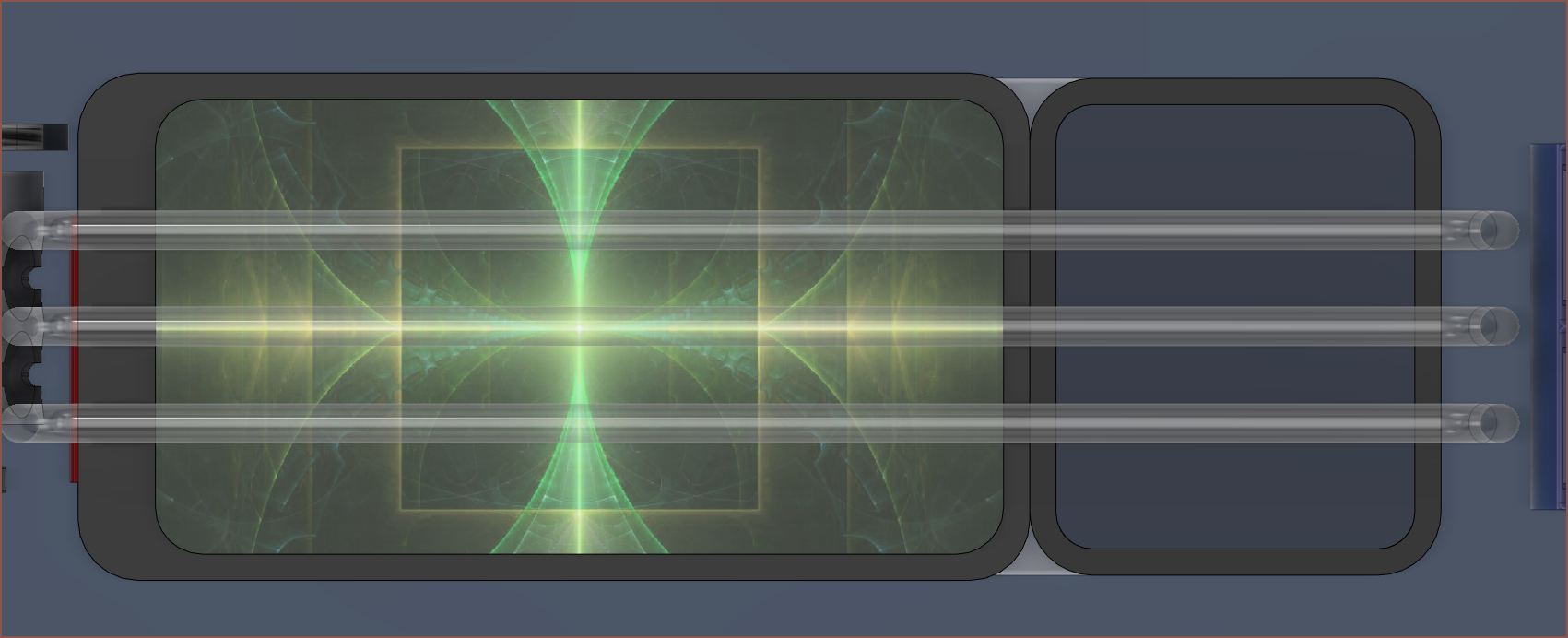
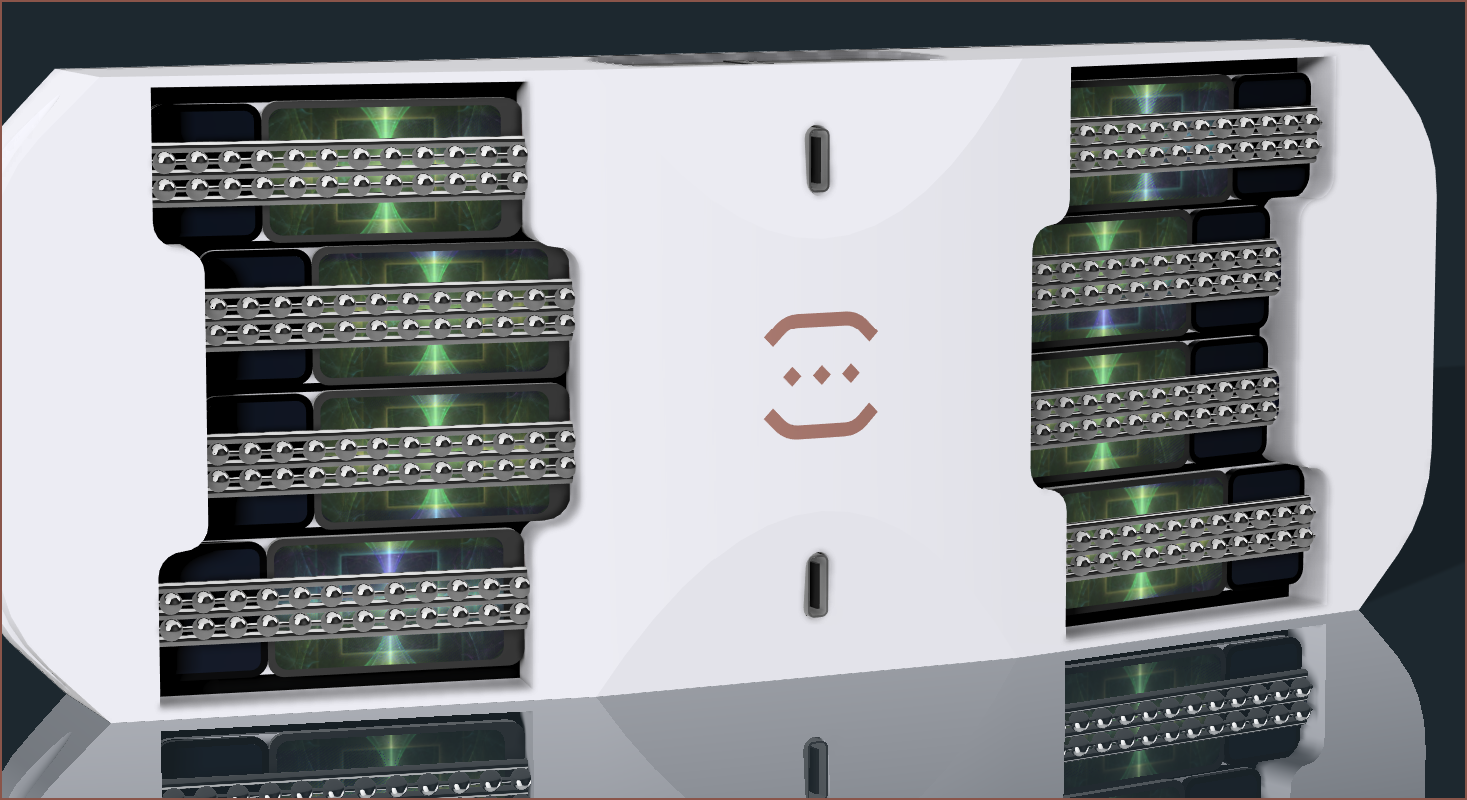
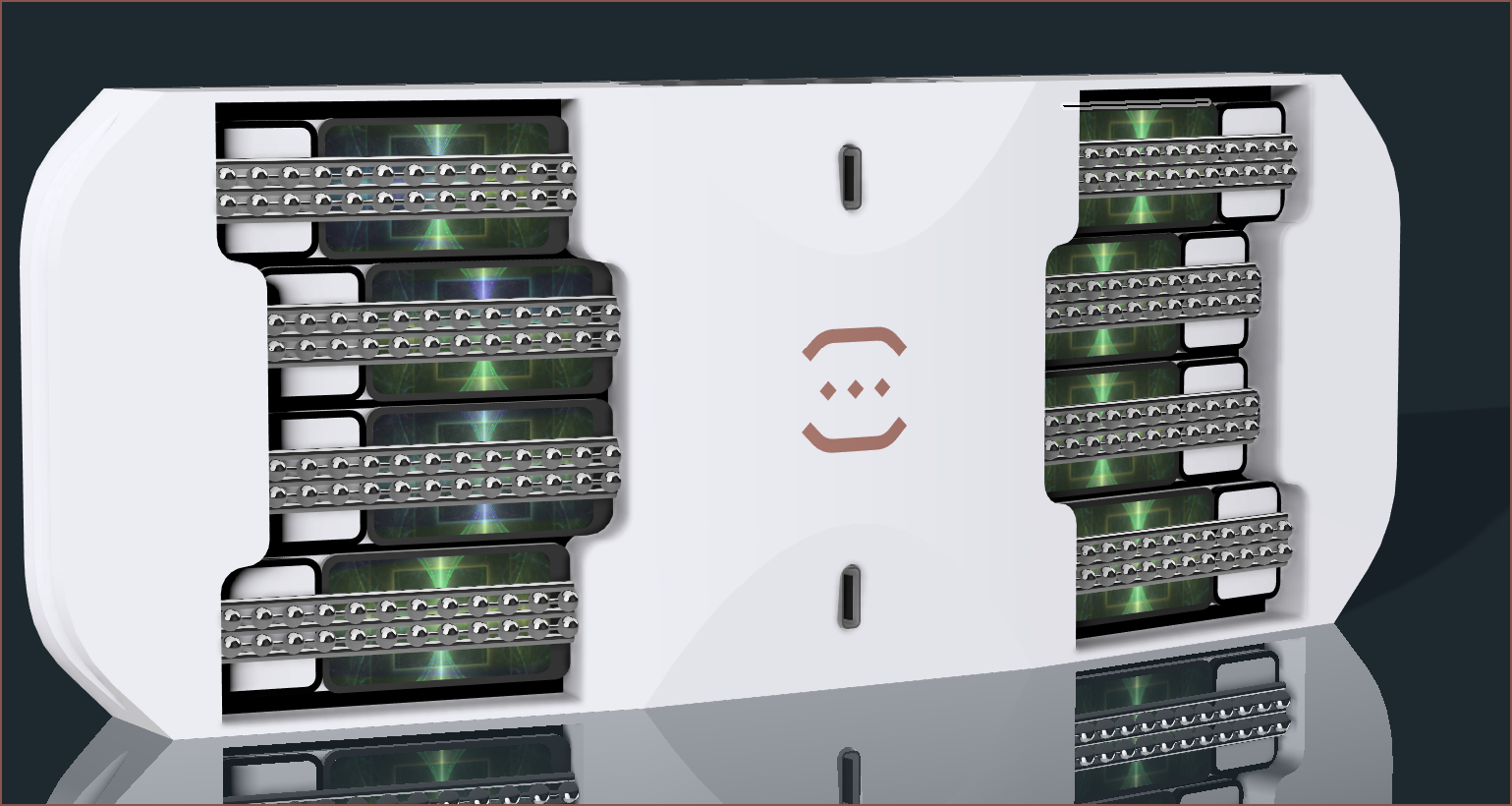 The next idea, intuitively, was to go to the other side and use white. While it gives Tetent a White + Black theme that's popular in the self-built PC hobby, I think it has an even more distracting look than the dark blue.
The next idea, intuitively, was to go to the other side and use white. While it gives Tetent a White + Black theme that's popular in the self-built PC hobby, I think it has an even more distracting look than the dark blue.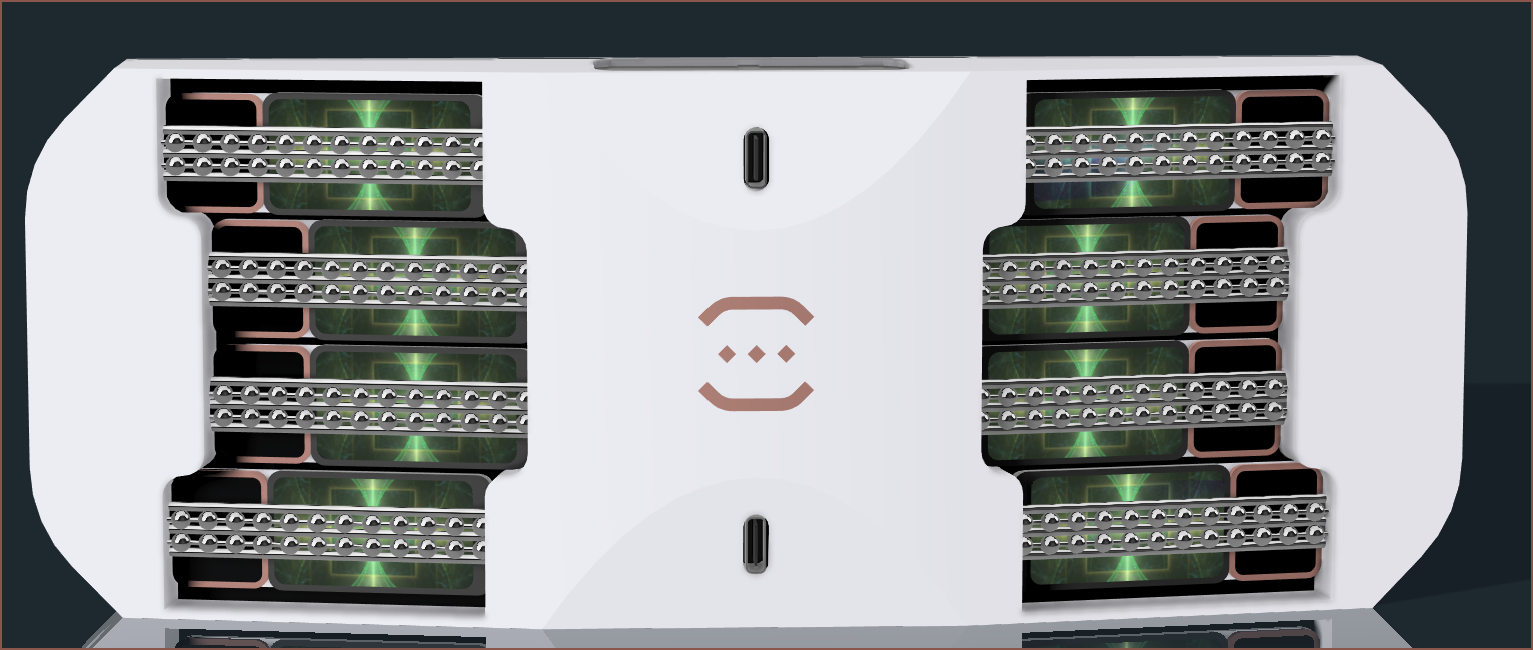 This idea certainly didn't help. It'll probably be ok if one sticks to similar colours on the LCD too, but I wanted to have a design that could work with any colour scheme.
This idea certainly didn't help. It'll probably be ok if one sticks to similar colours on the LCD too, but I wanted to have a design that could work with any colour scheme.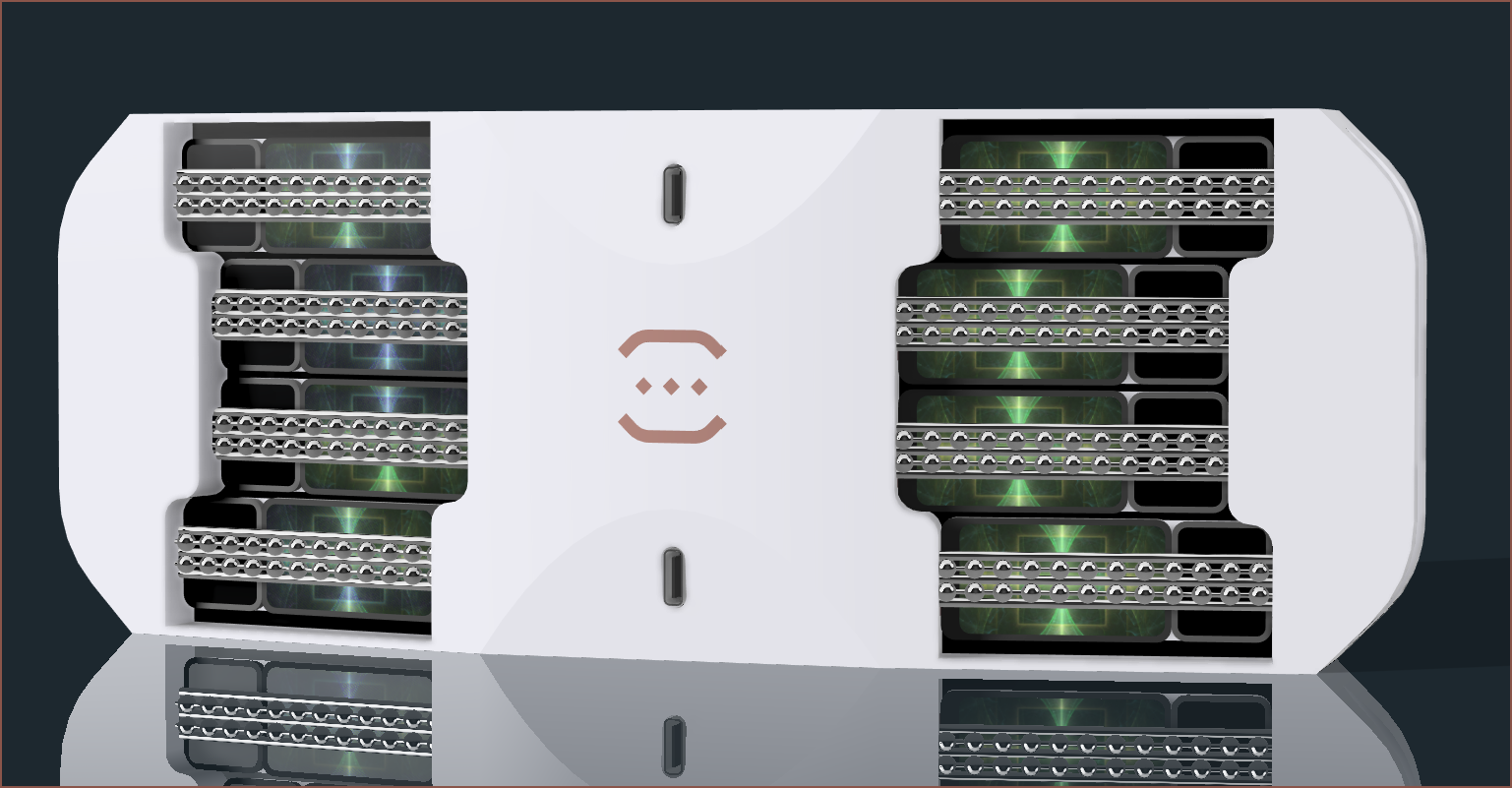 I then tried black with a grey bezel. I think this has a good balance of brightness and darkness. This is the one I tried just before trying an all-grey approach seen at the top of this log.
I then tried black with a grey bezel. I think this has a good balance of brightness and darkness. This is the one I tried just before trying an all-grey approach seen at the top of this log.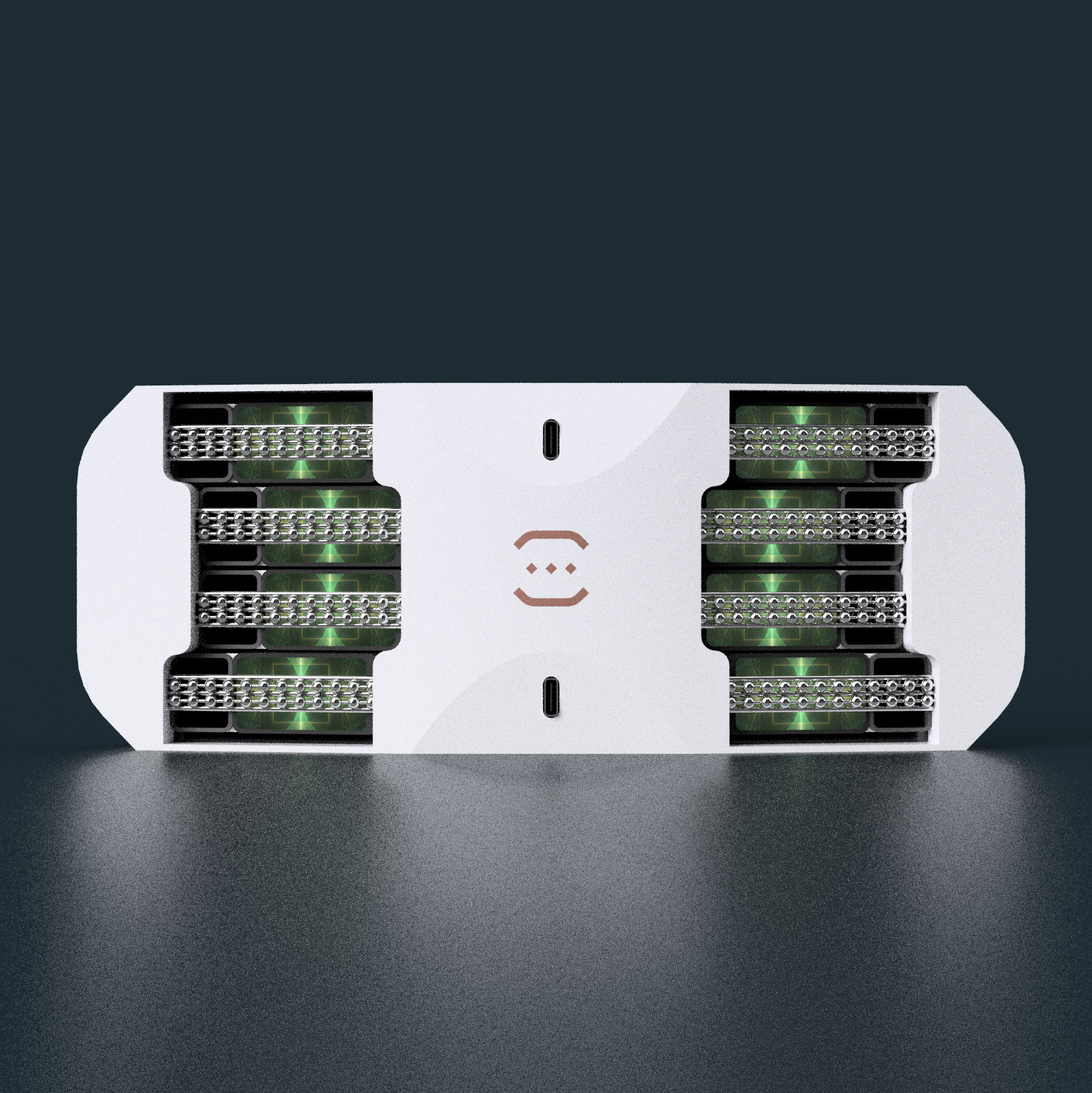 I think this version is visually crispier than the all-grey version due the the higher contrast from the black plastic. However, I belive the all-grey extension blends with the LCD better and promotes a calmer looking mindset.
I think this version is visually crispier than the all-grey version due the the higher contrast from the black plastic. However, I belive the all-grey extension blends with the LCD better and promotes a calmer looking mindset.